  Let's enjoy this world with me!
Let's enjoy this world with me!
|

Packing While Decluttering and Neutralizing
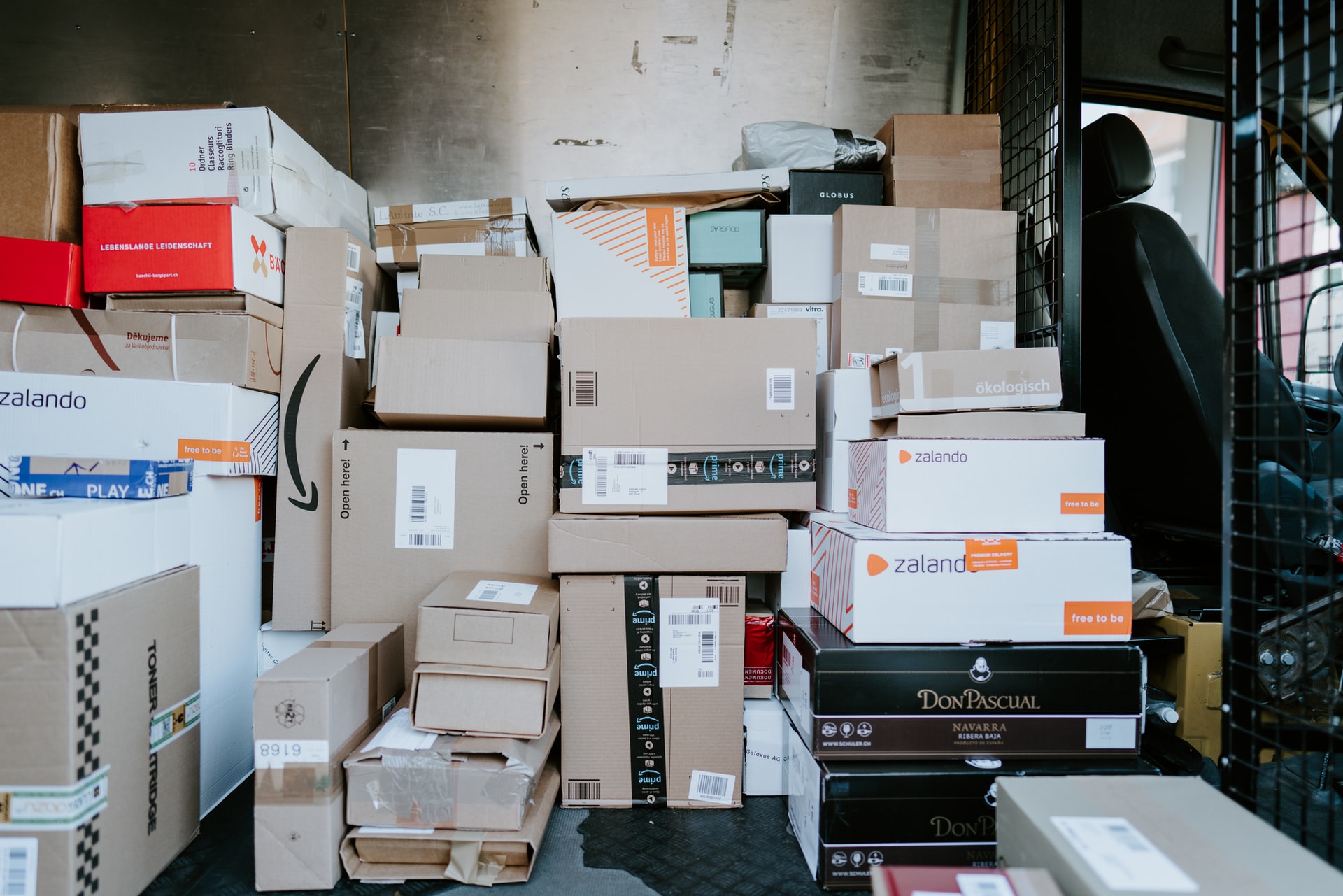
One of the great benefits of home staging is that you get a head start on packing. In addition, since you aren't in a mad rush to get it done, it will be less stressful and you can take the time to approach it in an organized fashion. Still another benefit is that all of this will make unpacking much less stressful, easier, and more organized.
Here are my top tips for packing. You can use these even if you aren't staging but are moving, say from one rental to another. But when staging, it is better to pack yourself. You will pay much more if you want the movers to pack your items as well as move them. It also makes much more sense if you are packing while staging, since it will have to be done a little at a time as you move from room to room. In addition, you know how you want boxes organized.
-
Have a Checklist
This is perhaps one of the most important things you can do to keep yourself organized. Find a spot where you will keep boxes for two time periods. First, find a spot to keep boxes as you are decluttering (and don't be too quick to seal a box unless it's completely full because you'll invariably find more items for that box). Second, find a spot for when you are finished packing and need to store the boxes until you are ready to actually move. These should be stored off-site if possible. Options include renting a storage unit, borrowing space in the basement/attic of family or friends, or renting a Pod.
-
Prepare an "Open First" Box
Label one box "Open First". Here is where you'll put those things you'll need right away. It varies with each family, and you may not need all these items. But you may include toilet paper, tissues, paper towels, bed sheets, paper plates, plastic silverware and cups, medications (or at least enough for a week), snacks and drinks (especially if you have kids), hand soap, change of clothes, shower and personal hygiene supplies, cleaning supplies, flashlights, battery-powered lanterns (just in case there are problems with the power), light bulbs, garbage bags, tools and scissors, house phone, cell phone chargers, any important documents and receipts, a list of important phone numbers, and a to-do list for the next day.
-
Develop a Box Labeling System
This will vary depending on your needs, situation, and the size of your family. Here are some things I recommend. Pick and choose the ones that match your style and situation.
-
Use large colored labels or stickers to designate what room the boxes should be placed in at the new home. This will make loading and unloading go quicker for movers or your own personal helpers. Make sure to have a printed master key list for each color.
-
Use the colored labels on the boxes and you could also write the rooms on the labels but that might be redundant. Another option is to use permanent markers, designating different colors for each room, and write the room name on each box in that specific color.
-
Write the overall idea of what's in the box, for example linens and towels.
-
Another idea is to get more specific and give each box a number, in addition to a room designation. Then, on a separate sheet of paper, write down all the contents you are putting in each box and be very specific.
-
If you have fragile items, make sure to write that on each box and you might even want to draw an arrow to point which way is up on the boxes.
-
Reserve and Label Boxes for Pets and Children
-
Use the appropriate packing materials.
The type and amount will vary depending on what you are packing.
Here are some packing options to protect items: bubble wrap, blankets, mattress covers, moving pads, packing paper, packing tape, and stretch wrap. You can also use your own sheets and blankets as packing material for items like glasses and dishes. Below are a few more tips.
-
Try to keep boxes to 50 pounds or less.
The biggest problem people run into is with books. They really do weigh a lot. Use small boxes for books or you'll never be able to lift them.
-
Develop a system for storing small pieces and parts of bigger items.
For items that need to be taken apart or that have lots of pieces (furniture or curtain rods with all their attachments), make sure to secure all small pieces in a plastic bag (sandwich, quart, or gallon) and attach securely to the item. Another idea is to pack one box with all hardware and small pieces and clearly label each bag with what item it belongs to and where it goes.
-
Also, make a plan for putting things back together.
If you are taking apart items that may be difficult to put back together you can do a few things: make sure you have the original manual, download or order one from the manufacturer, or take pictures as you take it apart.
-
Packing when staging follows a natural progression that just makes sense.
Pack out of season items first, followed by less frequently used items, and so on and so on. And don't pack anything you don't want or need, or any items you think you'll eventually throw out. Why pay movers to move items you're going to get rid of anyway?
-
Get supplies in advance
Make sure you get all the supplies you need, especially boxes.
You can order supplies from just about anywhere. Find out how the pricing works, whether you can return unused boxes, if shipping is included, and how long shipping will take. I have found supplies to be more expensive when purchased from the major moving companies or the chains or local retailers that rent moving trucks.
One of my favorites is Used Cardboard Boxes. They use recycled cardboard, ship for free, and will usually deliver in 1-2 days. I've used them more than once and have been very satisfied with the products and service.
They, along with most places, are now offering packages that include a variety of packing items, including different-sized boxes, packing tape, tape dispensers, markers, box cutters, packing supplies like bubble wrap, and more. Some have set packages, while others let you pick and choose.
I recommend measuring out the dimensions of each size box using items at home so that you get an idea of what each size looks like.
Check grocery and liquor stores. They are often looking to get rid of boxes for free. If you do a lot of online shopping, start saving the delivery boxes. Make sure boxes are sturdy and secure and that they are able to be closed and sealed completely.
Find out in advance if there are items movers will not move. Most moving companies have a list on their website of items they don't want to move or are prohibited from moving by law. They also have a list of items they recommend you take with you rather than loading onto the truck, such as cash and jewelry.
When packing, put heavier items on the bottom, lighter ones on top, and don't leave empty spaces in the box. Fill any empty spaces with blankets, towels, clothing, or newspaper. Use small boxes for heavy items, large boxes for light items, and medium boxes for everything in between.Contact the moving company, consult the manufacturer, or do some research on how to pack and move unusual items.
Don't forget to use your suitcases as packing containers too.
Here are some final tips:
-
Think about your pets.
Make plans ahead of time how you will move your pets to their new home. This will of course vary based on the number and type of pets you have. Make sure all pets have identifying information on them and/or are micro chipped. Both are even better. If you are moving out of the area, make sure to locate a vet in your new town before you move.
-
You can also use small stickers when moving electronics with multiple cords.
Place corresponding stickers on the cord and on the place where it attaches on the device. It might also help to take pictures while taking the item apart.
-
Don't label boxes as electronics or valuables
This will help reduce the possibility of theft. Make a master inventory list for yourself of which items are in each box. For valuables, you might want to come up with code words to use instead of the actual names of the items. Even take pictures of the boxes before sealing. This is helpful in the event of theft.
By following these tips, you can make packing a bit more organized and much less stressful for everyone involved.
If you need to move out and have questions about how you make apartment moving easy and affordable, don�t hesitate to ask US Border Movers, they have professional moving services across the country and to Mexico!
Moving to North Carolina

Moving to North Carolina can be an easy transition with the right tools. Whether you are relocating for work, school, or family, you will find everything you need in this emerging state. Well known for its historic precedence, North Carolina has become one of the country�s fastest growing states. Financial and technology institutions are making North Carolina home boasting an increase in employment, transplants, and the economy.
If the weather concerns you, North Carolina gives you moderate weather for all four seasons. The heat is never overbearing and the cold is never reaching frostbite. Not only do you get great weather but you have an option of living in three sections; the coastal plains, the Piedmont region (plateau), and the Appalachian Mountains.
Before you move to North Carolina, get pertinent information that will make your transition easy. In this guide, get everything you need to know from protecting your move to finding the perfect neighborhood.
Protecting Your Move to North Carolina
Moving interstate (across state lines) requires any mover to have a license to perform household moves. If you plan on hiring a long distance moving company, you should be aware of your rights as a mover. Not only should you be knowledgeable of your rights but should only use licensed and qualified movers to handle the job.
Without proper licensing by the USDOT and FMCSA, long distance moving companies cannot perform any move. Here are some tips to prevent you from being a victim of moving fraud:
-
Make sure the mover or broker is registered with the Federal Motor Carrier Safety Administration (FMCSA) by visiting www.protectyourmove.gov.
-
Check the complaint record of a mover or broker at www.protectyourmove.gov.
-
Avoid movers that do not show U.S. DOT numbers and brokers that do not show Motor Carrier (MC) numbers in their advertisements
-
Read �Your Rights and Responsibilities When You Move� and the �Ready to Move'' brochure on www.protectyourmove.gov. Your mover or broker is required to provide this information to you.
-
Movers must give written estimates. Brokers must issue written estimates if they provide estimates.
Do not sign blank or incomplete documents.
-
Make sure you understand the type of liability you sign for. This is a common pitfall for consumers. Ask yourself if 60 cents per pound is enough coverage for all your household goods if the unexpected happens.
-
Supervise loading and unloading of your household goods. If you are not available, appoint a representative to act on your behalf.
Finding the Right Neighborhood
There are several benefits of living in North Carolina. If there is a specific living environment that you enjoy more than the other, you can definitely find what you are looking for. North Carolina gives you three different options to choose from. You have a choice to live by the coast, near the mountains, or the metropolitan areas that are spread out through the state.
State Resources � The Department of Housing and Urban Development of North Carolina offers resources to start the process of finding your dream home in the state of North Carolina.
Online Resources � Resources like newsobserver.com and local newspapers in Raleigh, Charlotte, and Winston-Salem can also provide tons of opportunities for you to find roommates, homes, and apartments in North Carolina.
Social Networks � Online word-of-mouth better known as social networking can help you find almost anything. When it�s time to find the right neighborhood, ask friends and family on Twitter, Facebook, and Google+.
Word-of-Mouth � The cheapest way of finding a neighborhood is to reach out to your extended network and ask if they can recommend some areas that fit your criteria.
Largest Cities in North Carolina: Charlotte, Raleigh, Greensboro, Durham, Winston-Salem, Fayetteville, Cary, High Point, Wilmington, Asheville
If you have questions about how US Border Movers can make apartment moving easy and affordable, don�t hesitate to ask!
Preparing to Move Overseas

It's an exciting time in your life because you are making a big move overseas. A million questions are going through your mind on top of all your packing and moving worries. So while you research moving companies to help make your international move, make sure you have these 4 things under control before your moving day:
1. Get Support - Register with Your Embassy:
You might think this is overly precautionary, but since you may be living in a new country where you have little to no family or friends while also not being an expert in the area, a little precaution can go a long way. By registering, your embassy has a way to contact and assist you in case of an emergency (i.e. something serious like a major natural disaster or terrorist attack). The State Department website also has valuable safety information for regions abroad - like areas to avoid and what types of people are targeted for crimes.
2. Get Access - Research Getting a Visa:
Needless to say, if you aren't already a citizen of where you are moving to, you may need a visa. Since visa requirements differ from country to country, make sure you do the research well in advance.
3. Stay Healthy - See the Doctor Before You Move:
You may be moving to a country where you may be required/recommended to have certain vaccinations before you arrive. Get these shots sooner than later as some immunizations take longer to take full effect. The Center For Disease Control website has a list of all the mandatory vaccinations needed for different countries. Also, get your doctor to fill out something called an International Certificate of Vaccination or Prophylaxis (a record of all your immunizations). Some countries may not even let you visit without one, not to mention that in the extreme case of an epidemic it can come in handy (you can prove that you were immunized for that particular outbreak).
4. Fit In - Dress & Speak Like You Belong:
Depending on where you move, some countries have severe differences in "dress code" compared to the United States. If you suspect this is the case, make sure to research the common style of dress in the country you are moving to. Your mini skirt and tank top might pass for normal in one country but be completely immodest in another. Additionally, you'll want to make sure you are comfortable with the country's native language. Even if you don't have the time to become fluent before you move, at least learn some basic phrases (i.e. "Hello", "Goodbye", "Thank You" etc...) to help make your transition that much smoother.
So now that you have all the important stuff under control, you need to think about the move itself.
Research the company before you sign the agreement or contract and look for companies which provide quality services. You wouldn't go wrong with US Border Movers company.
How to Move a Pool Table
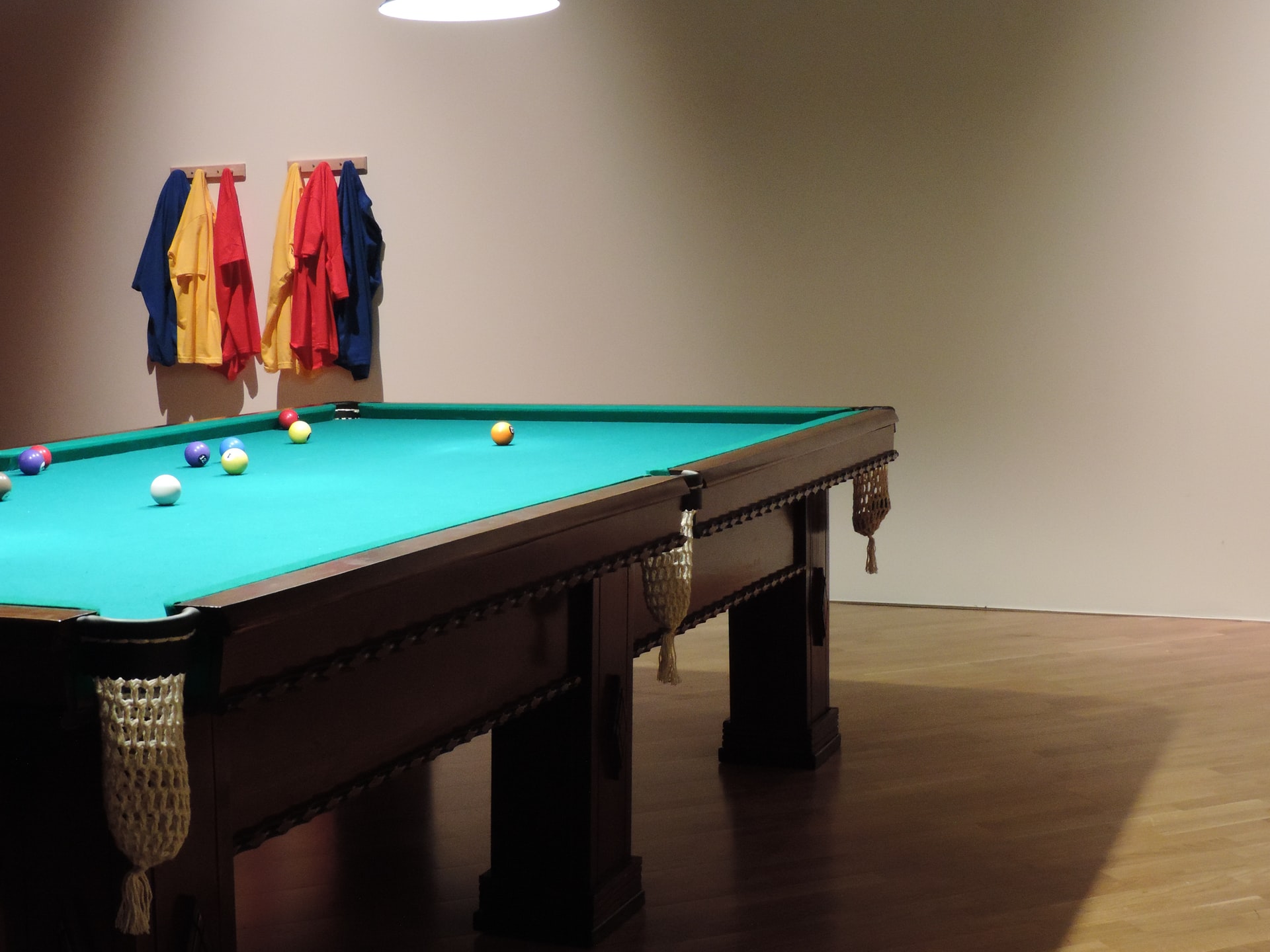
Moving a pool table is very similar to moving a piano, they both have complex pieces and can cost a ton of money if pieces become broken. On average, a pool table can weigh between 500-1,000 lbs so it�s important to assemble a team to have it moved safely.
Breaking down the pool table can take on average an hour from start to finish. It�s going to take a team of three to four friends to help with the entire process. If you want to avoid paying upwards of $500 to hire a mover who specializes in moving pool tables, here are few tips on how to move a pool table:
Removing the Bumpers
Start by removing the bumpers from all sides of the pool table. Depending on the type of wood you have, the bumpers should be fairly easy to remove. Once all the bumpers have been removed, it'll expose the slate that will be discussed later in this guide.
Removing the Felt
It's time to remove the felt. The felt is either stapled or glued to the table; possibly even both. Whether it�s stapled or glued, you should be gentle during the removal process making sure not to rip the felt near pocket areas. Start by going around the table clockwise or counterclockwise instead of starting in different areas of the pool table.
Picking up the Slate
Now that the felt is off, you are going to need a helping hand with the slate. A drill is the best tool for removing slate tables. If your pool table has plaster or beeswax covering the screws, any screwdriver should do the trick. Once again, take your time removing screws.
Pool tables typically come with two or three pieces of slate that can be between � to 1" thick so it's important you don't try to lift it on your own. Slate is extremely heavy but fragile. Make sure you create or transport it flat with additional padding for cushion.
Disassemble the Legs
We're almost done! This is where your group of friends will come in handy. Now carefully flip the pool table over and take the legs off the frame. Now that the pool table is upside down, removing the pockets should be a breeze.
Loading the Pool Table
Finally! All the pieces to the pool table have been broken down. Hopefully you�ve already wrapped and protected each section for the trip. On your way to the truck, make sure the frame is already flipped upside down so there won't be a need to flip it once it's time to load it. Lastly, securely place all the other items on top of the frame. Your pool table is ready to go!
If you are still thinking this may be too much of a bother, you should definitely hire a professional pool table mover. Pool tables are heavy and lifting without the proper help can easily turn into someone getting hurt. Never attempt to take on more than you can handle when attempting to move anything.
If you need moving services across the United States, click here.
Alarms & Security Systems
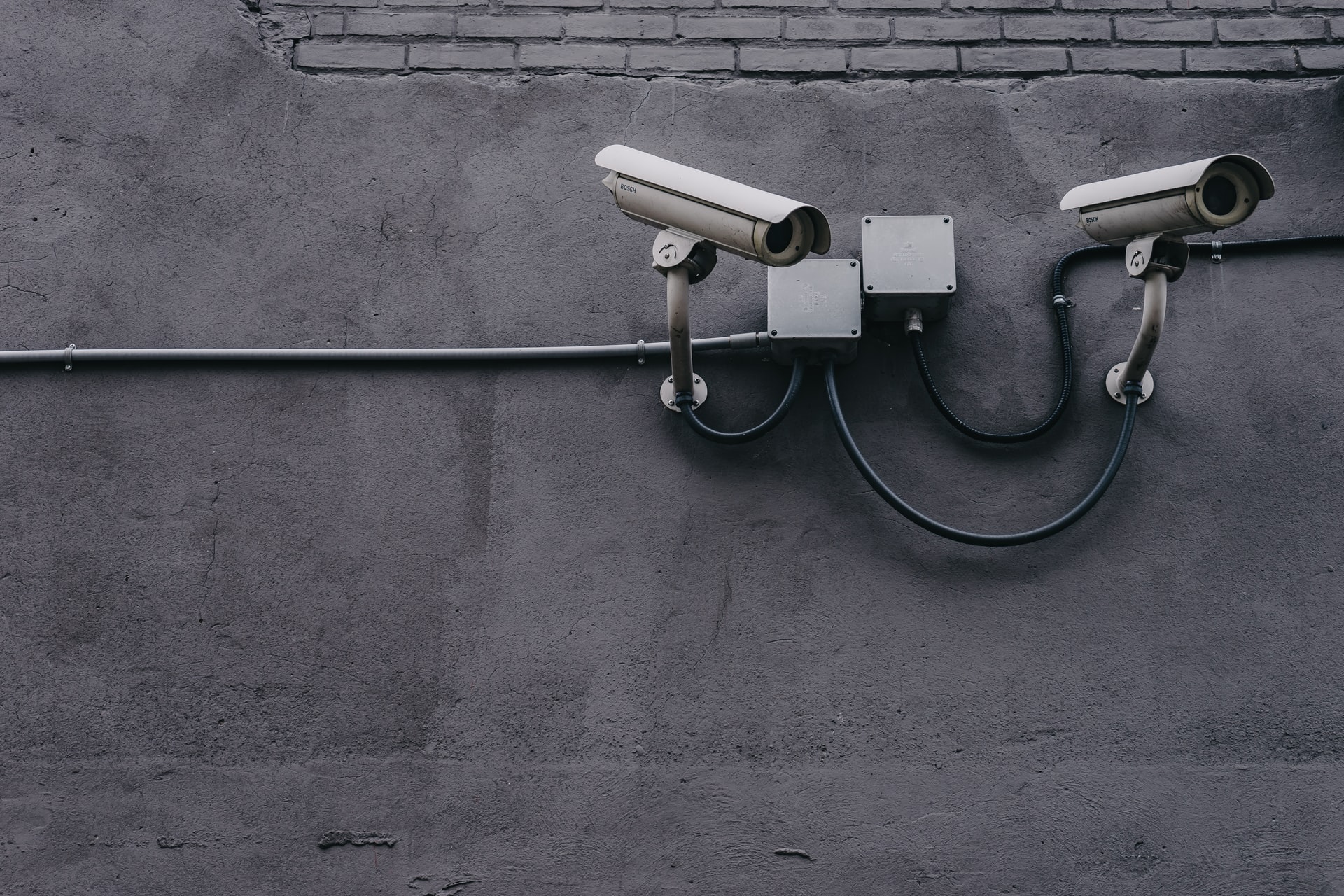
Security systems do more than protect you and your family against burglaries and break-ins. Many of today's systems also offer advanced warning services for fire, carbon monoxide and even medical emergencies.
Most insurance companies recognize the value of having an alarm and offer discounts to home owners who install security systems - and for good reason. Statistics show that homes with a security system are three times less likely to be burglarized. In fact, 9 out of 10 convicted burglars admit that they typically avoid a home protected by an alarm system.
Even if you are moving to a relatively "safe" neighborhood, you should consider installing an alarm or s security system. One out of every five homes will have a burglary, fire or carbon-monoxide poisoning over the next six years. Fortunately today�s advanced systems can help protect you from all these dangers, plus provide features to make your life easier. Before you decide on a home security system, think about who and what you want to protect. Consider the following options now offered by some of the top security firms in the country:
24-Hour Monitoring
Systems that are monitored by trained professionals not only sound an alarm, but also enable the security company to call the police, the fire department or an ambulance in an emergency - even if you�re not home or can�t get to the phone.
Theft Protection
Most basic monitored systems feature door and window sensors, sounders, motion detectors and signs to deter criminals. More advanced systems feature glass-break detectors.
Cellular Backup
For extra security, a cellular backup unit keeps the system connected to the monitoring center if your phone line is cut or your service is out.
Smoke and Fire Detection
Every 24 hours, 20 people die by fire in their homes. Monitored detectors can sound an alarm to alert you and your family and can send a signal to a monitoring center, where a trained professional can call the fire department if you�re away or unable to get to the phone.
Carbon Monoxide Detection
Each year 1,800 people die and 10,000 people are hospitalized from exposure to this odorless, colorless gas. A sensor can detect this dangerous gas, sound an alarm, and send a signal to the monitoring center, where a professional can call for help if you are unconscious.
Temperature Control Monitoring
Worried about your water pipes freezing? Sensors can alert both you and the monitoring center to low temperatures to help protect your home from damage caused by frozen and bursting pipes.
Flood Detection
Rising water in your home triggers sensors that can alert both you and the monitoring center to broken water pipes or an overflowing washer.
Medical Emergency Pendant
This easy-to-use, lightweight device is ideal for seniors living alone who want to feel safe and keep their independence. That's important when you consider that one out of every three homes will have a medical emergency this year. If something happens, a simple touch of a button alerts the monitoring center, where a professional can call for help.
Video Intercom
Better than a peephole, this one-button door-sentry system can let you see and hear who is at your door, from anywhere in your home.
Keychain Remote Control
Don�t like to punch in passcodes? A wireless remote control small enough to put on your keyring can let you turn your system on or off or even let you turn on the lights in your home with the touch of a single button. Some systems also let you operate your system via touch-tone phone from almost anywhere in the world.
Lighting Control
Lamp modules can be programmed to turn on your lights when your system detects fire or an intruder, or when activated by the keypad or a remote control.
Paging
Some systems can be programmed to page you when your kids come home or alert you to an emergency condition in your house.
Special Access
Certain security systems allow service or repair people to enter specific areas of your home while keeping the system armed in the rest of the house.
Click here if you are in need of a professional moving company to help with moving your house equipment after packing them.
Prepping Your Family for a New Home in Overseas

Moving long distance is never an easy thing especially when you have to leave your friends and family behind, your job and comfort zone. But sometimes it is necessary to make a move in order to have a better life in terms of a job, marriage etc.
No matter the reason for moving out of your current state of residence, one should still put some thought into it before making such a big and life changing decision.
One of the first things that one should consider before moving is how much it would cost to do so. Start looking for long distance movers within your area who specialize in state to state move. Remember to do your research into the company to ensure that they are reputable and have good customer standing. You can find out the latter by asking for referrals from the moving company. Experts would tell you to have at least two long distance moving companies on standby for your move just in case one of them does not pull through.
Next, when choosing a state to live in, you should pay attention to the cost of living as it compared to where you currently live. It would not be a wise decision to move to a state where the cost of living is expensive especially if you are trying to move on your current income. With that said moving long distance to an expensive state is only recommended if you are moving for to a new job that pays twice as much as what you currently make.
Before moving, do your research on the new state as regards to the type of housing and the best areas to live and raise a family. Try locating a house that is not only affordable but one that is large enough to accommodate every member of your family. Even if you find a home that is the right price, the area may not be the safest. Do your research on the Internet to get an idea of the area you would be choosing to live. In most cases there are particular websites that you can find online where there are tenant reviews and ratings for homes in a specific area. This has proven to be very effective for those who are relocating.
Safety aside, you would also want to find a location that is within close proximity to schools, convenient stores, malls and restaurants. This would definitely be an added convenience especially for those in the family that do not drive or own a vehicle. Choose schools for your children that have great student achievement ratings and after school activities that they can enjoy.
It is always recommended to have a great support system in the new state where you would be moving. A cousin or great family friend may be able to assist you with getting things done around your home or they may be able to give you a tour of the place and baby sit your children should you need their assistance.
Looking for more moving tips? Visit US Border Movers.
Prepping Your Family for a New Home in Overseas

Moving your family overseas is sometimes inevitable. It may be caused by several justifiable factors, such as job reassignment or simply thinking that the pursued country will be an overall better place to live in. But in any case, moving is not as easy as just acquiring Visas for everyone. It requires shared responsibility, overcoming paranoia and thorough planning.
One of the common mistakes people make when making the attempt is leaving the other members of the family in the dark, especially the children. While it is understandable that kids have a raw sense of practicality and will almost always be reluctant, it doesnˇ�t mean that you shouldnˇ�t include them in the discussion. Instead of giving them what seems to be a threatening ultimatum, take the time to explain to them why it is necessary.
You must not allow them to think that you do not respect what they have to say, as they may hold this as a grudge while growing up. Besides, if you think that moving overseas is the best choice for your family, why not completely involve them from the initial decision? Make them individually feel that their opinions matter, not just yours.
The main issue why everyone should be involved concerns the element of moving from a familiar place to a relatively new one. As such, expect the kids to have apprehensions. It all stems from the idea of being a stranger to a foreign land. It is highly advisable then that you have adequate knowledge about the new place. This will obviously prepare you to answer questions they will inevitable make. It will also help you in keeping your own fears in check.
Arranging for a new home overseas takes considerable planning. You should make steps in ensuring that the transition of your family will be as seamless as possible. Contact friends or acquaintances who can lend you their aid. Hire the best services that will help you in every aspect of moving in. You can also devise a way to move each family member in separate schedules if your budget does not allow them to do so all at once.
In moving overseas, a lot of adjustments must be made. There will definitely be differences you will encounter in both lifestyle and culture. You just need to have an open mind to accommodate your new background. Most importantly, do not leave your family out of the loop in learning about the new surroundings and teaching them to respect othersˇ� way of life. If you take all these into consideration, you will have lesser difficulty in the overall process.
Want to learn more tips about moving? Visit US Border Movers.
Relocation of Your Business

Many factors enter into the decision to relocate a business. A business can be thought of in terms of three components:
-
the production of a product and/or service
-
the marketing of that product/service
-
the customers who consume it
Each of these components will impact the decision to move. (Note: the distinction between product and service is irrelevant in this general context -- whether a business sells a product or a service, it is in any case producing something.)
When it comes to choosing a mover, look for movers that are equipped to handle large moves. If you�re planning to relocate your business across the border, click here to get in touch with a moving team that has exactly what you need.
On the production side, one must look at the availability of resources, both human and otherwise, the legal and regulatory climate as it relates to one's industry, the facilities necessary to accomplish production, and the resultant cost. The resources and regulatory climates of various locales will be dealt with at length in another section of this site. But it is relevant here to consider a few key points with respect to facility planning.
The general issues, insofar as production is concerned, are:
-
Location
-
Size
-
Parking
-
Transportation
-
Availability of power, communications, and supplies that include personnel, production materials, and miscellaneous vendor services, e.g., security systems, waste removal, office vending, insurance, plants/art/landscaping, etc.
-
Zoning
-
Layout and Design (i.e., architectural issues, including the selection of an architect)
-
Telephone and Network infrastructure
-
Furniture and Equipment (lease versus purchase)
On the marketing side, growth objectives must be examined in light of market conditions and competition. Of course, the availability of marketing personnel will be a consideration and, as with production, various legal, regulatory, and facilities issues must be addressed (again, the "production" of a marketing effort is not essentially different from the production of an end product or service, so the facilities issues are in general the same).
In addition, the geographic relationship to one's market will enter the equation. Consider two extremes...In the case of a mail-order business, the location of one's market is the nearest post office. In the case of a gas station, the situation is different. And, once again, this relationship to one's market will greatly affect facilities planning.
How To Make The Most Out of A Small Living Space
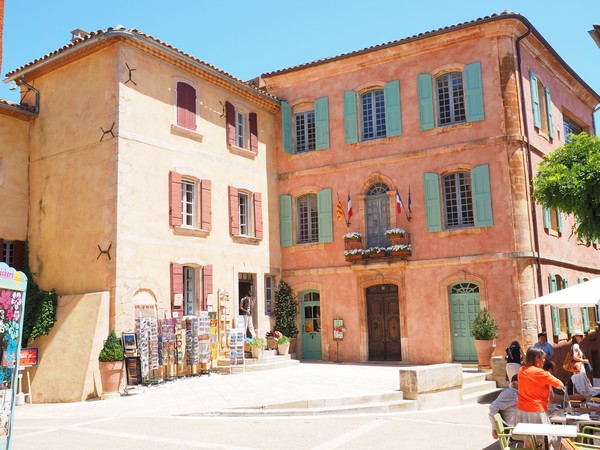
Managing small rooms and utilizing the small space that exists can be slightly problematic to some individuals. However, a small room with limited space can be converted into a very spacious area if some tricks and techniques are put into action by the person in-charge of arranging and sorting the room. Actually no room is small because no matter the available space what matters is the skill used to create more space that was not there in the first place.
Your living space can be as big as you want it to be as long as you use your creativity to get more space while avoiding stuffy situations. Demand for more houses has increased in the recent past and real estate investors have responded to this by creating more units in apartment complexes, however these units have become smaller and smaller throughout the years. This has called for more swift skills needed to arrange a room in a unique way to create a more spacious living arrangement.
Here are some useful tips to get the most out of your small living space:
Mirror & Glass Installations
Bring more reflective surfaces into your room by installing more glass and mirrors in strategic points around your living room. These reflecting materials actually work in such a way that they create space that can be called �negative�. This is a technique used by interior designers to have that extra space in your living room. It works, and it shouldn�t be doubted.
Furniture Positioning
The furniture you have and how you arrange it around your living room will determine the space capacity in your room. For better arrangement of space in a rather small room, furniture must be placed in such a way that the horizontal and vertical spaces are utilized in a creative manner. For instance you can have your bookshelves vertically arranged at the foremost end of your living room. You can always create more space on the background just in case you need more book shelve space.
Utilize Furniture With Legs
Always have chairs or tables with legs. Why is this important? When arranging your living space it is important to get chairs and tables that can enhance the visual look of your room. Large and boxy-like furniture prevent your room from getting that visual and negative space it should have. Using furniture that has legs creates a heightened look within your room, thus creating more light.
It is important to use coffee tables with legs because the eye will see it as an addition to your space, while a boxy table will add more mass to your space, making your visitor feel more enclosed.Make sure your table has a glass top or some sort of glass ornament in order to blend with the mirrors installed around your room to get that more space.
Lightweight Double-Use Furniture
Fun and sleek furniture helps create more space in your living room. Bring that extra space into your room by choosing the best furniture in terms of scale. Choose sleek and matching furniture for your room. For example, you can avoid chairs with arms and excessively large furniture that would take more space. Furniture arrangement around your room should be in such a way that more space is created for other purposes and to avoid stuffiness in your living room.
By having a sofa that has a bookshelf incorporated in its back, you are maximizing your space. Look for useful furniture that have multiple uses. European and Asian furniture makers are experts at creating such furniture. If you go to Japan and look at a small apartment you�ll see that no space goes unused. It is quite impressive how skilled they are at maximizing their limited space.
Neutral Color Schemes
Expand your room by painting it using monochromatic or neutral colors. Neutral colors are believed to be magic especially in creating more space in your living room by pushing the walls away visually and letting the eyes move freely without obstruction. Soft white colors, like ivory, are most popular when it comes to this technique. It�s a magical illusion that should not be foregone.
Looking to move somewhere new? US Border Movers offers professional cross-border moving services that will make youre relocation easy, convenient, and worry-free.
A Taco Primer for Visitors

The humble taco was one of the earliest foods of Mexican origin to find its way north of the border. Commonly sold in fast food chain restaurants or served in school cafeterias, tacos have become part of the palate of 'American' meals. Visitors to Mexico may find similar versions or something quite different, depending on which kind is most common in their city.
Even in Mexico, tacos vary. In the north, usually the tortilla is de harina, of flour, which is larger. In the south, tortillas de maiz, or of corn, are more common, smaller, and slightly more yellow in color. The sizes vary, the smaller ones of "3-4" in diameter used for tacos. The tacos may be heated on a comal, the pan traditionally used, a skillet, or steamed. When steamed, the taco is usually served with a double tortilla.
The place where the tacos are usually sold are called taquerias, while the person selling tacos is called a taquero. Frequently found in most neighborhoods, the stands are usually only open to serve tacos during the morning or evening hours. Tacos are not as commonly eaten as a meal at midday, the time of the heaviest meal of the day.
The meats served in tacos vary in regions, but a very visible one is the meat on a vertical spit that is turning slowly next to a flame. The method of slicing the pork, called pastor, from the word for shepherd from Lebanese immigrants, with meat sliced thin and stacked on the spit. A slice of pineapple is at the top, and as the taquero expertly chops off slices, he will add a slice or two of pineapple for that special flavor it imparts.
Other common meats in tacos are carne asada, roasted beef, or arrachera, a spicier version from the north. The crispy, fried meat that looks like calamari is called tripa, and is just that, fried tripes, or intestines. Tacos de cabeza, or 'of the head', are just that as well. Traditionally the entire head of a steer was steamed all night, allowing the juices to drip, and then chopped and shredded in its broth. The resulting meat is non-greasy after the steaming process, and asking for maciza will get you the beef itself while sesos are brains, oreja is from the ear, and lengua is tongue.
After choosing your meat, the taquero may automatically add the garnishes, which may vary according to the type chosen. Common garnishes are sliced radishes, sliced or chopped cucumbers, chopped cabbage, cilantro, chopped onions, added by spoon or utensil.
Then come the salsas, or sauces. You will have several choices, depending on which meat you choose. A dark red salsa is made from small, dried red chiles, and can be quite hot. A textured green salsa usually is from the green tomatillos, of the tomato family, and may be less spicey. The light green one, runnier, comes from avocados. The red, green and white salsa, called pico de gallo, or rooster�s beak, in some areas, is called salsa Mexicana in Jalisco because it has the colors of the Mexican flag. If you�re unsure, try a little dribble first and take a bite. The flavors vary and 'liquid fire' could be the result.
Should you be aware of cleanliness standards? Consider advice from locals. Ask around if you can. The local people will recommend the places they frequent, happy to send more business to their favorite stand. If there's no one to ask, check around for a taco stand that has a lot of people. Once again, the local people know where to go. A new taco stand in a neighborhood usually takes some time to gain its clientele, as people are cautious at first.
It's easier to find the best tacos in your Mexican neighborhood if you have more time to immerse yourself in the local food and culture. Visit US Border Movers today to learn how you can relocate to Mexico.
Check how the money is handled. If there isn't a person specifically to handle the money, a plastic bag or glove should be used to make change, and then removed before touching food. Is there water for washing hands and utensils? Be aware of smells that trigger danger signs, like 'sour' odors. Make sure that what you get is fresh before you eat it. The advantage of eating at a taco stand is that everything is prepared right in front of you so you can observe what goes into it.
Remember, as you travel in a country where things may seem new to you, that part of the adventure is trying new things. When it comes to food, be adventurous, but keep your senses about you.
Bulbs and Plants of the World - Growing Lilies from Seed

Lilium can be grown from seed. This is the most satisfactory way to build up a collection quickly. Seed from the species will come true to type; but there can be some variation within the hybrids. Hybrids are doubtful to produce flowers which look like the relative plant, and most likely there will be some variation such as colour, height or even form.
Recently, I have had the opportunity to get some Lilium seed from two sources.
The first is the New Zealand Lily Society and then also the Victorian Lily and Bulb Group, which is an aftermath of the old Australian Lilium Society. This was a wonderful Society of which I was a member for a few years, before I took ill. Unfortunately they no longer exist, which is sad, as their Monthly Bulletin/Newsletters were always full of useful and interesting tips from some of the best Lilium growers in Australia.
It is always a pity to see good organisations go down but the Victorian Group has continued to maintain monthly events and so in December I am off to have a look at their Lilium show, which is being held at a member�s home.
In the meantime I experimented with different ways to get seed to germinate. Their has been some discussion on the Lily Site about germination and although I have successfully used the Flotation method with other species through the years, I had never sown Lilium in anything other than potting mix. I set about using a few different methods and mediums which included:
Peat Moss
This method was very successful and the seeds, roots and leaves were very easy to see and extract.
Sphagnum
This method was also successful but I found that it was possible for the roots to get entangled in the moss and it was difficult to extract them without breaking. If using Sphagnum, make sure it is chopped up very finely.
Water
(flotation) This is an excellent method to use. Some of the seed may not germinate and some may even develop a fungus growth. It is easy to see this and remove any seed not wanted.
Wet paper
This was also an interesting way to germinate the Lily seed. It is important not to let the paper get dry and there is the chance that the root might grow into the paper. It is very important that you do not break the growing roots as you inspect or remove the seed.
Under Wet paper
This was similar to above and gave the same results. The paper was stained with brown colour after a few days which had leached out of the seed coating because of the water. It may be that the coating is a germination inhibitor and that soaking removes this possibility. This is only a personal comment;some types of seed do need soaking before germination but I doubt that this is the case with Lilium.
Potting mix
This is by far the easiest method to use, especially with Trumpets, Aurelians and Asiatics, as they germinate very easily. With the delayed hypogeal species like Orientals and Martagons, it may be best to start them in some type of medium like peat or sphagnum moss.
Although all methods did work, the conclusion is that potting mix is the favourable way, because eventually they will have to grow on in potting mix anyway.
The exception to the rule would possibly be the Martagon species and the harder species which are slow. With these methods, you can actually watch their progress as they grow. To show this, included is a photo of a Martagon seed that germinated on wet paper within 4 weeks and it has developed a nice little bulb.
With the peat moss and sphagnum moss, moisten it and then squeeze out the excess water and put about a cupful in a zip lock bag. Then add a small quantity of seed to each bag and seal them; mine were then stored inside in my seed room, on shelves.
They were checked regularly until most had germinated, then transferred to normal pots. I have read that it is better to keep the bags slightly open but my experience was that it really doesn�t matter. The only seeds I haven�t potted on are the Martagons, which I will continue in the moss to watch the bulbs increase in size. It is also recommended that the Martagons be given a cold spell of 12 weeks in the fridge to help maintain their growing pattern. After they have developed a nice little bulb, it is best to give them a small amount of Liquid fertiliser to help them grow on. Lilium seeds are divided into two groups, generally referred to as slow or quick germinating (hypogeal and epigeal, respectively). Slow germinating seeds require a warm period to make them germinate (summer), a cold rest period (winter), then another warm period to initiate them into leaf production (spring). It could take eighteen months or more before the first tiny leaf is produced. It is probable that this will be the only leaf produced in that season, so it should be carefully protected, as it will be helping to develop the first tiny bulb.
Quick germinating varieties on the other hand, send up a narrow seed leaf [cotyledon) immediately after germination, at the bottom of which the tiny bulb develops. This should take only three to six weeks in spring time, and true leaves will follow fairly quickly.
And then, of course, we could use Tissue Culture or Scaling to increase our stock of plants. We will leave this to discuss another time.
I hope you learned something new from this article. If you need yard maintenance, check out Portland Tree Trimming services.
----------------------------------------------------------------------------------------------------------------------
Moving Antiques
When thinking about moving any antique you must give the situation of the act of moving grater thought than at other times. Just like moving your heirlooms or valuable art, you should consider a Professional Moving Service, first. This option gives you the security of a professional who is licensed to move antiques and it gives a licensed company that can ensure your items. In this case, you would have to make sure the company you choose has enough liability insurance to cover your antique. In this case, you would not want any insurance which would only cover a part of the antique�s actual worth.
When using a professional mover you will want to do the following:
- Hire an appraiser to have your antiques appraised.
- Make sure the moving company can cover its cost if lost or damaged.
- Get a quote
-
- Provide third party insurance coverage if the moving company of your choice insurance coverage less than the full value of your antique.
- Pick up cleaning supplies at your neighborhood furniture company or hardware to make sure that your antique is cleaned before it is packed and placed onto the truck (Do not use oils or wax as my research shows that such cleansers can soften the finish and allow the antique to be marred or scratched easily by the very padding that is supposed to protect it).
- Make sure you are present when the actual packing and loading, as well as unloading procedures, are taking place.
However, if you are moving the antique yourself you would do the following;
- Get the antique appraised
- Provide insurance coverage through you home owner�s insurance or some other third party insurer.
- Give the antique a thorough cleaning.
-
- Make sure you have enough moving pads as well as heavy-duty moving belts
- A heavy-duty dolly
- Several strong friends to help you if the antiques are either large pieces or heavy pieces
- Use the truck lift to load the antique onto the truck and to unload it once you get to your destination.
Appraisers do charge for their services and thus this extra cost will increase you moving budget allowances. This is an unavoidable expense when it comes to moving Antiques.
You can request your antiques moved by a professional moving company, such as US Border Movers across the United States and Mexico.
----------------------------------------------------------------------------------------------------------------------
Moving Resources - Moving Yourself

Even though we are always trying to avoid having to move ourselves, often the circumstances, whether time or money, demand that we do. Not to worry, there are many places that rent moving trucks to help you from one home to another.
If you consider when you leave your home to go on vacation and that sinking feeling rises that you have forgotten something�left the iron on, the water running, etc�this same feeling when you are moving yourself is twofold. You have to make sure that you have left your old home in the condition that you said you would, that everything is securely on the truck, and that everything will be as it should be when you get to your new home.
Fear not. US Borders Movers has a list of ideas for those of you who are in the precarious position of having to move yourself.
Before Moving Day
Renting the Truck:
There will be a walkaround by you and one of the rental company employees. You will be held accountable for any damage that is not written on this sheet. So be sure to note every little flaw.
Moving Music:
Many moving trucks are only equipped with the barest essentials, often without a tape deck or CD player, sometimes even without FM radio. Check your particular truck and decide if you can travel that far without some good tunes or talk radio. Buying a small radio might be a good investment.
Truck Repair Kit:
Buy some of your own windshield wiper fluid, anti-freeze or coolant, and oil. This truck will be pulling a heavy load and it might need more than just gas to get there.
Truck Rental:
If you are towing a vehicle behind your rental truck, make sure the trailer you are pulling has a working tow package. This means that the brake lights, tail lights, blinkers, and trailer brakes are all in working order.
Driving Route:
Before you even drive one foot, get your mind ready to be thinking about overpasses. This is a common problem with rental trucks as people are not used to looking for low clearance. If you go under a low clearance bridge that you will not clear, it will destroy the truck. And you will be left holding the bill.
One More Day:
It is a smart idea to compare the pricing difference if you kept the truck one extra day, in the cases when you�re doing a long distance trip, like when someone is moving to Puerto vallarta. People often underestimate how draining the whole moving process can be, and if you are hurrying all day so that you can return the truck by five, you will most likely make extra work on yourself by not moving the right things to the right room. Find out what it would be worth to you to be able to take breaks, go at a nice pace, and take the truck back the next day. It could be such a small amount that it will be worth it to pay for the extra time and have the option to be tired and work smartly.
Smart Way to Pack:
Pack the heavy stuff toward the front of the truck, i.e. the part of the truck closest to the cab. If you can, pack such that what you want to come off first is put on last. Also put anything that you may need to get to quickly, like overnight gear, right inside the door.
How to Park the Truck:
If you are moving/traveling on multiple nights, make sure to park your truck smartly. Find a wall or a tree or some otherwise immovable place where you can back the truck right up close. This way, if someone happens to break into your truck, they won't be able to get many items out.
Padlock:
Buy a lock so that you can secure the back door to your truck.
Unloading: Often rental trucks have a pullout ramp for loading and unloading. This ramp is narrow and typically made of aluminum. Be careful that you don't fall off either side when carrying heavy objects. Also, these ramps can become very slick if they even get a little bit wet. Carpet scraps and rags are great to minimize slipping.
----------------------------------------------------------------------------------------------------------------------
How to protect your floors during a move
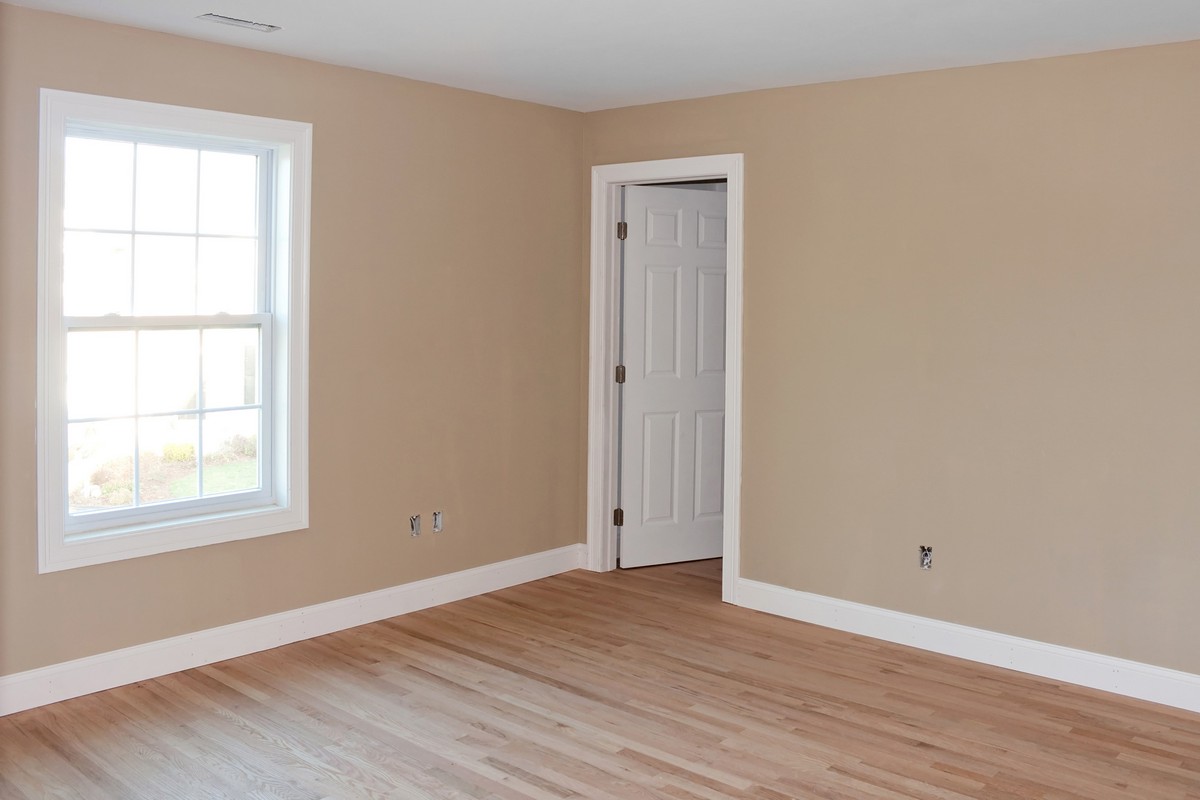
Protecting your floors while moving
If your floors get a lot of traffic on a "normal" day, you can count on at least tripling the traffic on moving day. Whether you're hiring border movers to do the packing and loading, or you're doing it yourself, it's a great idea to protect your floors before you start moving things out (or in). If you're moving out, the new owners/renters will appreciate it. If you're moving in, you'll be extra glad you took a little extra time to protect your floors, it may keep you from having to hire professional carpet cleaners.
Scratches, footprints, and scuffs, oh my!
I've got hardwoods in my house, and they're wonderful. But, if you've lived with them for long, you know how easily they're scratched and dented. If you've lived in a house or apartment with linoleum, you know how easy it is to scratch or tear it. And, while it's softer to walk on carpet, it's difficult to slide large furniture across it, and of course, it stains easily. So, what's a person to do who has no choice but to slide furniture and walk across the floor over and over?
I've got a few suggestions:
A friend of mine who likes to rearrange her furniture on a fairly regular basis introduced me to a product called Moves Furniture Sliders. She said these little guys have made moving her heavy entertainment center much easier. I checked into them, and it looks like they're padded to protect wooden floors and other hard surfaces. My friend actually uses them on carpeted floors and said it makes sliding things easy.
Another idea for carpeted floors is...use a product like Carpet Shield. It's a self-adhesive film that covers your carpets to keep dirt that gets tracked in from getting into your carpet. It comes with a roller so it's easy to put down. It's also tear resistant. After your move is complete, you can simply pull it up and dispose of it.
As a last resort, you could lay down cardboard, painter's drop cloths, sheets or plastic...but we don't recommend this. The likelihood of someone tripping over these loose items is pretty high.
Home Lawncare and Gardening - Good Garden Soil
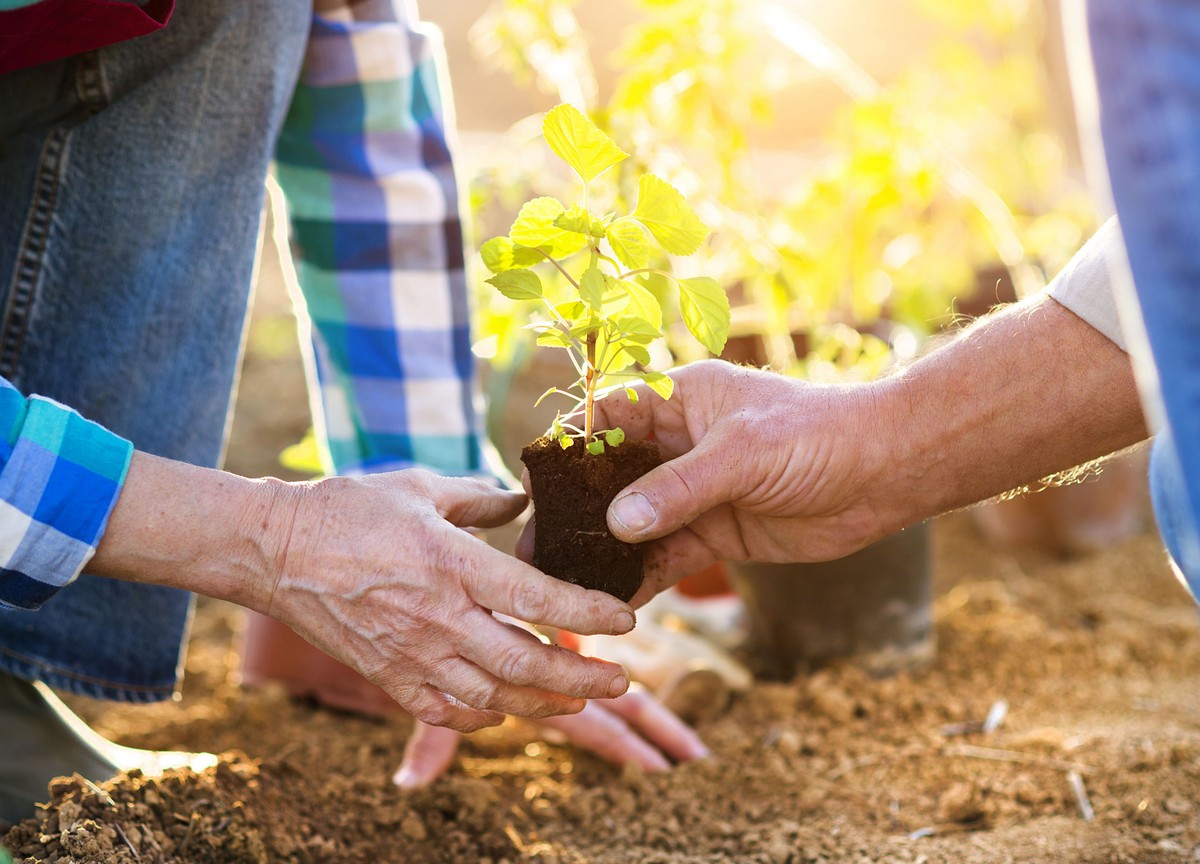
Soil is the foundation which is ultimately responsible for a healthy garden or lawn. Soil is different from �dirt� because it contains a complex mixture of mineral matter, organic matter and living organisms. It is capable of sustaining life.
It is therefore not surprising the single most important task gardeners can perform is to improve the soil quality. No amount of fertilizer, water, or other means of regulation will have as profound effect on healthy plant growth as healthy soil.
This article will answer questions such as: "What kind of soil do I need ?", "How can I get good garden soil?", "Do I need to replace the soil?".
What plants need
Besides simply anchoring the plant, soil provides certain chemical and physical properties. Plant roots must extract water and dissolved fertilizer nutrients from the soil. In addition to this, plant roots require oxygen to be present in the soil to allow them to breathe.
The optimum conditions vary by plant but generally loose, friable, water-retentive soil is near ideal. It allows oxygen and water to co-exist while allowing plant roots to grow deep.
What is Soil?
The main ingredients in soil are inorganic mineral particles of clay, sand, silt, and rocks, which have been deposited on the surface over a period of many years. In the cavities formed between these particles, water and oxygen reside.
Soil is typically described based on the relative combination of the 3 particles: clay, sand and silt.
- Clay particles are very small, flat, sticky particles about 1/17,000 inch in size, e.g. they are very small, right?
- Silt is rounded particles about 10-15 times larger than clay particles.
- Sand is also rounded particle but 50-1000 times larger than clay particles (depending on the grade of sand).
- Loam is a term used about a mixture of all 3 particles in equal proportions (1/3 each).
- Since soil does not always contain the same volume of each, different "grades" of loam have been established. Examples include sandy loam which contain relatively more sand than clay and silt, whereas loamy clay contains more clay than sand and silt. There are other variations possible, too.
Each 'loam combination' has its own specific advantages and disadvantages.
The sand particles allow plenty of oxygen in the soil due to the relatively large spaces between them, but water drains too quickly below the root zone and washes out fertilizer nutrients, also.
Clay particles on the other hand tend to pack down leaving only very small spaces which fill with water but excludes air. The sticky clay particles can make it difficult for roots to grow deep. Clay is very good at holding on to fertilizer nutrients through their large combined surface area, but sometimes even too good. The chemical properties of clay soil can result in fertilizer being tied up; the clay particles bond chemically with the nutrients making them unavailable to the plants.
Silt retains properties of both clay and sand, including their advantages and disadvantages.
In most cases, a combination of the 3 types of minerals (loam) gives the best growing conditions. This is because the combination of small, medium and (relatively) large particles provide for uneven cavities which allow for a good combination of aeration, drainage and nutrient holding capability. Some plants do better with relatively more clay in the soil, but most plants in general prefer a loam or sandy loam soil.
If you need your garden maintenance by professional experts, check out Portland TT�s services.
Organic Gardening - Let's Talk Dirty - The Basics of Beginning Composting
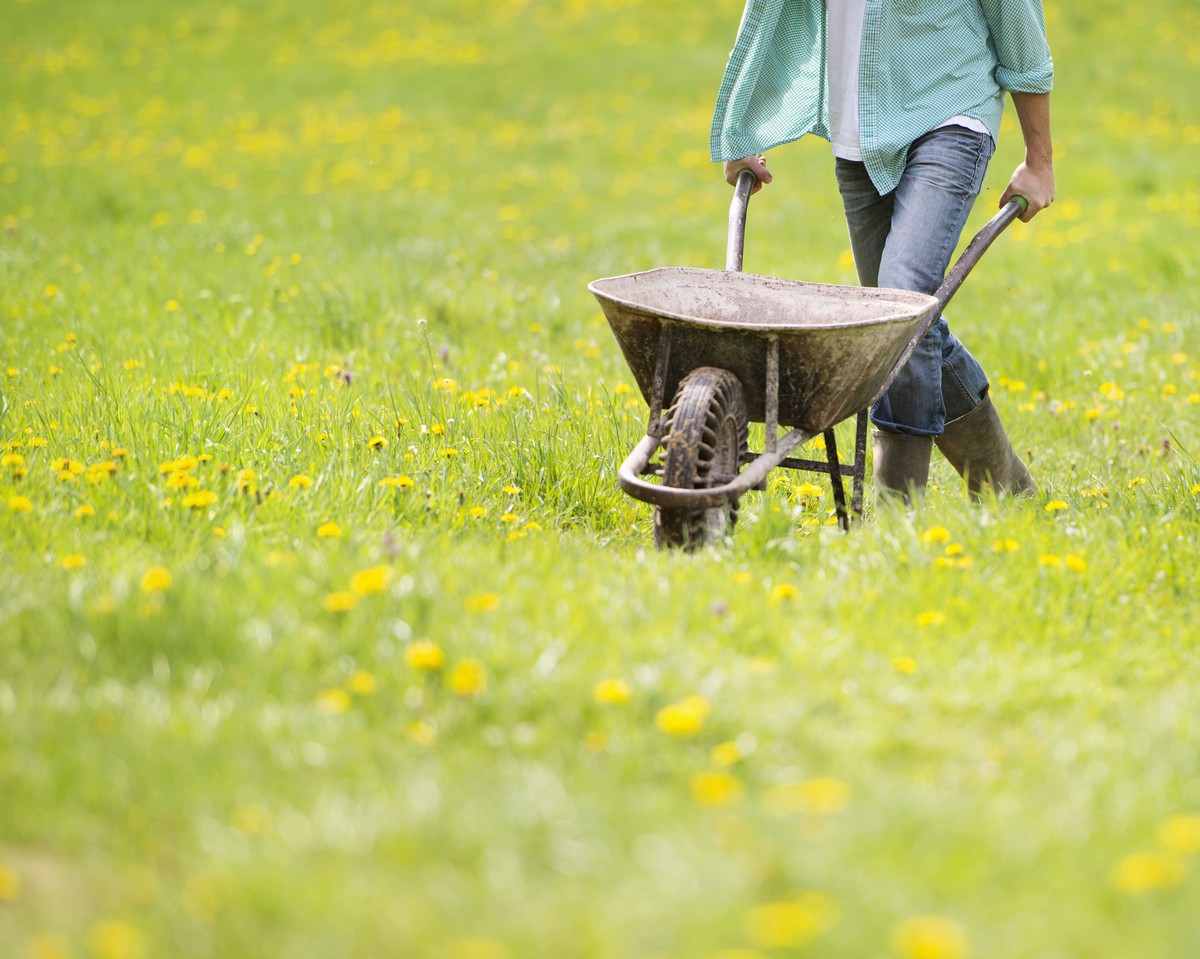
Talk Dirty To Me
For this article, we�re going to talk dirty. However, referring to compost as �dirt� seems disrespectful somehow, for there is much time and effort put into its creation. As usual, Mother Nature hosts a fascinating and thoroughly efficient recycling process.
Probably the first step every new organic gardener should take is the formation of a compost pile. In a perfect world, everyone would be composting -- not just gardeners. Even if you have only houseplants to care for, a little compost is a great amendment to their potting soil. But we�ll get to possibilities for high-rise apartment-dwelling composters later.
Compost Happens
Let�s begin with a definition of what compost is, exactly, and what�s so great about composting?
In actuality, composting takes place all around us. When the ground is carpeted with fallen leaves and other organisms in various stages of decay, it is composting. All natural material on the ground breaks down and eventually becomes a course, nutritious self-fertilizer for the earth. Finished compost -- a dark brown, earthy-smelling, crumbly substance -- is a great additive to any garden�s soil in providing nutrients and improving texture and drainage. Unfinished, lumpy compost makes great mulch too. Beyond that, it�s free; think of all the money you�ve spent on fertilizers and mulch in the past.
If that�s not enough to convince you, take a trip out to your local landfill. The sight of all that refuse should inspire you to do something else more Earth-friendly with your kitchen scraps, papers and grass clippings besides bagging them up and tossing them in the garbage.
Location, Location, Location
The first step in starting a compost pile is -- as they say in the real estate business -- location, location, location. If you live in the cooler climates of the U.S., it�s a good idea to start the pile in an area of the yard that is fully exposed to the elements, both sun and rain. Heat and moisture work together to make the components of the pile break down faster. If you live in a mild climate, full sun isn�t as important, but access to water certainly is. Make sure your hose will reach the pile for necessary watering in the swelter of summer.
At the same time, because a compost pile is not the most aesthetically pleasing site in the world, you may want to choose a fairly remote corner of the yard if possible. In all cases, make sure you can adequately reach the middle of the pile from a couple of angles. Stirring, sifting and observing all the worms munching on your pile are all part of the fun!
Compost, Contain Thyself!
The second thing to consider on behalf of your new pile is a container. Having one isn�t necessary. My "Major Pile" is just that - a 4� mini-mountain sitting on the ground. However, a container or bin will keep your compost under control, looks nice, and can even speed up processing.
Compost containers come in the form of fancy barrel-shaped tumblers, �pyramid� boxes, double- and triple-compartment louvered bins and more innovative shapes. The basic rule is to make sure the compost gets air and water.
Although an outdoor container isn't required, a must-have is a receptacle for gathering kitchen scraps.The smell of rotting onion skins and coffee grounds isn�t something you want hanging around.
The Recipe for Cooking Compost
Now, onto the real nuts and bolts of composting - the ingredients. Some people say you can put in �anything that used to be alive�, but that�s a little broad and daunting for the beginner. Let�s concentrate on obvious, easy stuff.
Here�s a good starting list for your pile:
Chopped leaves
Grass clippings
Small twigs
Shredded newspaper (not colored slicks)
Vegetable and fruit scraps
Coffee grounds (paper filters too)
Eggshells
Sawdust
Animal manure
The important thing is to have a good balance of �green� or nitrogen-rich ingredients (like grass, manure, coffee grounds and veggie and fruit scraps) and �brown� or carbon-rich ingredients (like shredded leaves and newspaper, and sawdust). A good ratio of �Green� to �Brown� is 1:30. That is, much more leaves than grass.
When starting a new pile, added food scraps should be �pure� - no oils, sauces, etc. Don�t add any meats, dead animals, poisonous plants or sick plants. Don't use grass or leaves that have been previously treated with toxic chemicals or show obvious signs of disease. And it goes without say that plastics and metal should NEVER be added - they simply don�t decompose.
How do you know when compost is "done"? Well, the general rule is that your compost is ready when you can't determine the grass from the banana peels from the eggshells, and it's a nice dark brown, fluffy substance.
If all of this seems terribly confusing, see below for some sites that offer great insight into compost ingredients.
The best way to start a new pile is with a couple of big bags full of shredded, non-clumped leaves. Spread a 4� layer about 3� across where your pile will be. Add a little water. Then, mix together whatever else you have collected, i.e. kitchen scraps, newspapers, etc. put in on the pile and add a little more water. Each time you add stuff to the pile, try to make sure it is damp, but never soggy. An efficient compost pile measures at least 3� high. After about a week, you should be able to peel open the pile, hold your hand over the middle and feel heat coming from it. If your pile isn�t heating up adequately, add a little more of any �green� item, like grass clippings, and make sure it�s a little damp.
The Poop On Poop
Heat is vital to the function of a good compost pile, and is a death sentence for any pathogens that may exist in the contents. Here�s one reason why that�s so important:
There is an ongoing controversy regarding the addition of manure -- specifically, pet waste -- to the compost pile. A high percentage of seasoned composters advise against it. The argument is that the feces of meat-eating animals like cats and dogs can contain diseases, and should therefore not be composted.
However, an efficient compost pile will break down the pathogens present in manure. Therein also lies the problem, though - a small compost pile or one without the adequate balance of �green� and �brown� ingredients will not have the proper amount of heat in the middle to burn away such pathogens.
For beginning composters, my advice is to stay away from pet feces for the time being. Purchase bagged composted cow manure instead, or even better, find a friend with a pet rabbit or chicken and more droppings than they can handle.
As the Worm Turns
Those of you without a yard or the space for a compost file, take heart. Help is here in form of your friendly neighborhood red wiggler!
The fancy word for this composting method is �vermiculture�, but basically, it is indoor composting using worms. Amazingly, a single tiny redworm or Eisenia foetida is capable of consuming up to its own weight daily in organic waste. So if you can�t compost, vermicompost!
This is a great project for children (especially in the dead of winter) and is not only fun, but educational too. Hopefully, it will teach kids to develop an early, lifelong respect for organics and the planet as a whole.
The building of a worm bin is somewhat specific, so I�ve compiled a couple Web links below that either sell the bins or discuss how to make your own.
In closing, don�t miss out on a great opportunity to see Mother Nature at work and have an unending source of fantastic fertilizer � get thee to making a compost pile!
If you need yard maintenance services or planting trees and getting rid of the old ones, then check out Portland TT.
Five Things You Need to Know about Compost
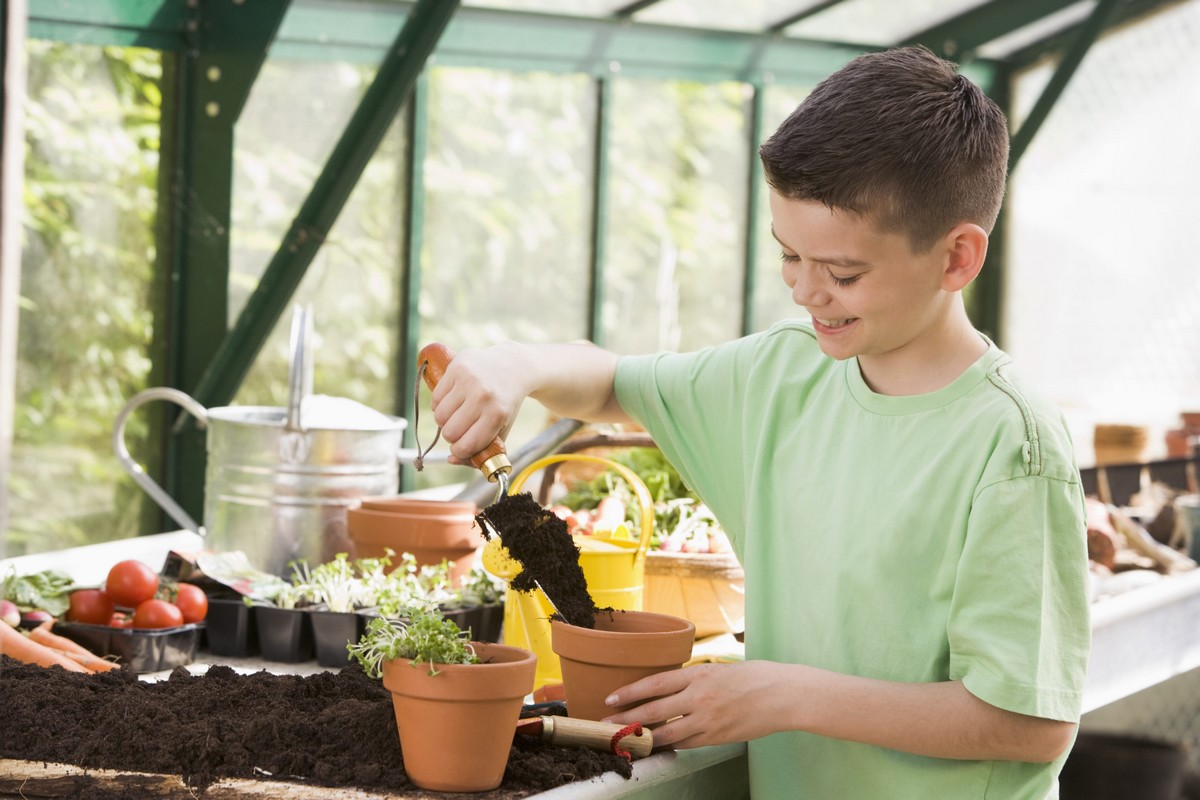
Composting is an excellent practice for the natural gardener or lawn enthusiast. There�s nothing quite like knowing your beautiful, rich soil used to be a bunch of stuff you chose not to put in a landfill. So, what do you need to know about compost?
1. What is Compost? Composting is a natural gardening method that takes advantage of the decomposition process that occurs when kitchen waste, organic household waste, and yard waste are essentially allowed to rot. Organic waste is like a feast for microbes (bacteria, fungi, etc.), and when they chow down, the result is a rich humus that plants will love to live in. Of course, there are techniques for turning the rotten mess into a nutrient-rich soil additive and not a slimy mass of sludge.
2. How to Compost? There are a lot of tips and tricks for making the most of your compost pile or bin, but the basic concept comes down to moisture and air. Remember, it�s all about feeding the hungry microbes, so you want to keep them alive and happy. Like most living things, they need water for survival, but too much water slows down decomposition and results in slime. It may take a little trial and error, but aim for �moist�, not sopping wet. The bacteria you want to encourage is of the aerobic variety, meaning they require oxygen to thrive. Anaerobic bacteria will do the trick too, but those guys are seriously smelly. Regular aeration by turning the compost pile with a pitchfork or turning the crank on the bin will do the trick, it�s simple!
3. Why Compost? Plants and lawns love it! They love it a lot more than chemical fertilizer because it makes the soil healthy and provides all the necessary nutrients over longer periods of time. And, it�s good for the environment � you will reduce your waste by reusing it and you won�t need as many products that add nutrients to the soil.
4. Who Can Compost? Virtually anybody. Even if you don�t have a garden or the outdoor space to dedicate to a compost pile, you can do it indoors with products. A commitment to composting will ease the burden on our landfills, and everybody has at least one garden geek friend who would be thrilled to take it off your hands.
5. What Not To Do with Compost. Not everything can be composted, especially if you�re going to use it for an edible vegetable garden. Avoid adding things like chemically-treated wood (sawdust is a great addition to a compost pile, but not if it�s full of chemicals), diseased plants, human or pet waste, meat or fatty foods, or weeds that can sprout from their roots are stems (examples include morning glory, ivy, and sheep sorrel).
It�s pretty hard to mess up a compost pile, and if you do, the worst case scenario is starting again from scratch.
If you�re in need of professional tree trimming and garden maintenance services, check out Portland TT.
Regional Indigenous Plants Provide a Maintenance Free Garden
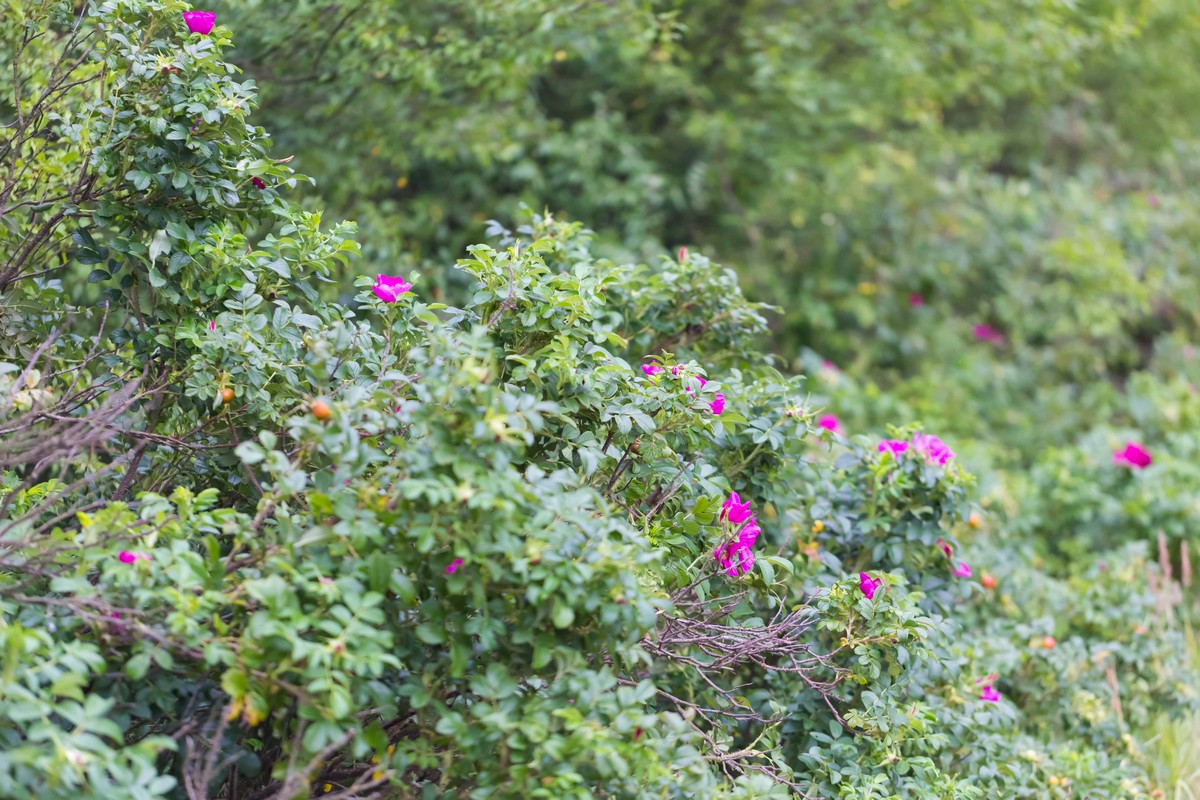
Native plant gardens are not only easy to grow but are also excellent choices for attracting wildlife.
In the not so distant past, wildlife managers planted non-indigenous plants for wildlife food sources. Many of these exotic species became nuisance plants because they would easily adapt to an area and out compete indigenous species. Some exotic species of plants are extremely invasive, such as purple loosestrife Lythrum salicaria, and are threatening existing indigenous plant and animal communities with extinction.
Biologists and resource management professionals worldwide now recognize the benefit of using native plant species over exotics. Because of the work of these dedicated professionals in promoting indigenous plant species for use in landscaping, native plant gardens are gaining in popularity.
What are Native Plants?
Native plants have evolved within the regional landscape. These are plants that have always been in a particular area, environment, and habitat. Almost every region of the world has native plant species.
Although these plants can be used for ornamental purposes, they are not considered ornamentals by natural resource professionals. Ornamental plants, flowers, and trees are subject to genetic manipulation by horticulture professionals. Native plant species, if they are truly native, have not been subjected to genetic manipulation.
How to Find Native Plants
Be careful of where you obtain your native plant species. Many seed catalogues and nurseries will advertise plants and trees as native plants when they have actually been raised hundreds of miles away. It is best to obtain local species for planting because these plants are well suited to a particular area. Local species have evolved in slightly different ways than plants hundreds of miles away and local plants maintain local integrity, or help preserve, the gene pool of that area.
Ask your government or university extension agents where to obtain authentic native plant species. County conservation districts in the United States also know where to obtain native species through plant rescue programs or local greenhouses that specialize in native plants. Many of these agencies also sponsor native plant sales.
Attract Wildlife
Species of wildlife have evolved along with native plant species, so they naturally prefer these native species for their various needs. Native plants provide wildlife habitat requirements: food, shelter, nesting, and resting sources. Native plant species can be an important part of your wildlife management plan.
Virtually Maintenance Free
Plant native species in the correct soil, light, and height and spatial conditions. Water approximately every two days, but if there are drought conditions water daily. Native species of plants are perennials, so once plants have established root systems they do not require regular watering regimes. Even under drought conditions native plants have a tendency to grow back once drought conditions are over or during the following years growing cycle.
Native plants do not require pesticides or herbicides. They rarely encounter pest problems because they have evolved along with the area's bugs and pests and have evolved strategies for combating these problems.
Once native plants have gone through their growth cycle, simply cut back and wait for spring to enjoy again.
If you need a quick garden maintenance, visit Portland TT to learn more about their professional staff and services.
Simple Design Techniques You Can Use to Lay Out Your Flower Bed and Integrate it into Your Existing Landscape
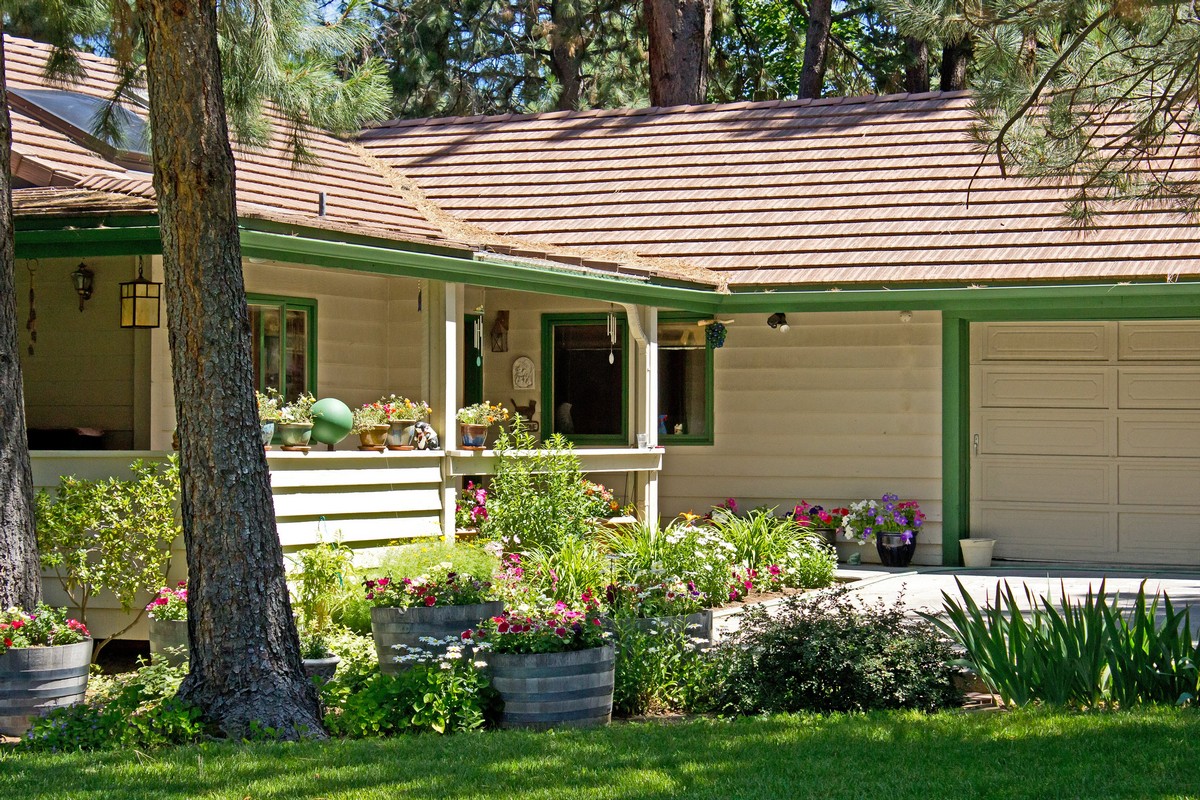
Use these simple landscape design concepts to lay out a flowerbed in the right location, that's harmonious in size and shape, and enhances your overall landscape.
Your flower garden does not exist in a vacuum. It grows in the context of your landscape. It should serve a function and complement existing features so it fits seamlessly into the scene.
Serving A Purpose
� For example, plant flowers to:
� provide a focal point adding curb appeal
� bring fragrance and beauty to a seating area Plant a Fragrant Garden
� pretty up a blank garage wall (viewed from the kitchen window)
� surround a flag pole or bird feeder or mailbox (see below for example)
� replace a hard-to-mow or failing lawn area
Harmony
The flower garden should be integrated into the landscape so it seems to belong there naturally. Its size should be appropriate to the proportions of the overall space, so it neither overwhelms nor looks so tiny it is lost.
The flowerbed size and shape should echo or balance the dimensions and proportions of the dominant features in your landscape; and it should align with its neighbors. For example, the flower bed along the garage should run the length of the garage, the bed along your patio should extend the entire length of that. If the patio is huge, make your flower bed deep enough to visually balance the expanse of the patio. A flower bed along a walk should be wide enough to look pleasing. Too narrow and it will look skimpy, like a skinny row of marching soldiers.
Year Round Appeal
Think carefully about where you locate your flowerbed. It will draw the eye both winter and summer. In winter, bare soil topped with mulch can look bleak. In summer, colorful flowers will pull the eye right to that ugly mailbox.
Inspirations
Existing plantings can suggest a flower bed. For example, if you have a small tree or shrubbery, plant flowers beneath or in front. Select flowers that reflect a quality or characteristic of the woody plants, perhaps a woodland theme or a color theme. They could all bloom at once, or extend the display by using only flowers that peak at a different season than the shrubs.
Try It: Mail Box Flower Bed
Complement a decorative mailbox with small shrubs (for all season interest) and flowers. (Make sure you can reach the mail!) Integrate the bed into your landscape by using consistency:
� Same plants/colors at the mailbox and by the front door or walk
� Same hardscape (edging, step stones, mailbox style) as by the door or walk
� Same style/shape of bed (formal/geometric or flowing/organic) as by the door/ or walk
Voila! You're a garden designer.
Needing professional help to clean up your garden from pests, plant trees or do general garden maintenance? hire a professional company like Portland TT.
Why Garden Soil pH is Important & How to Use a Soil pH Tester
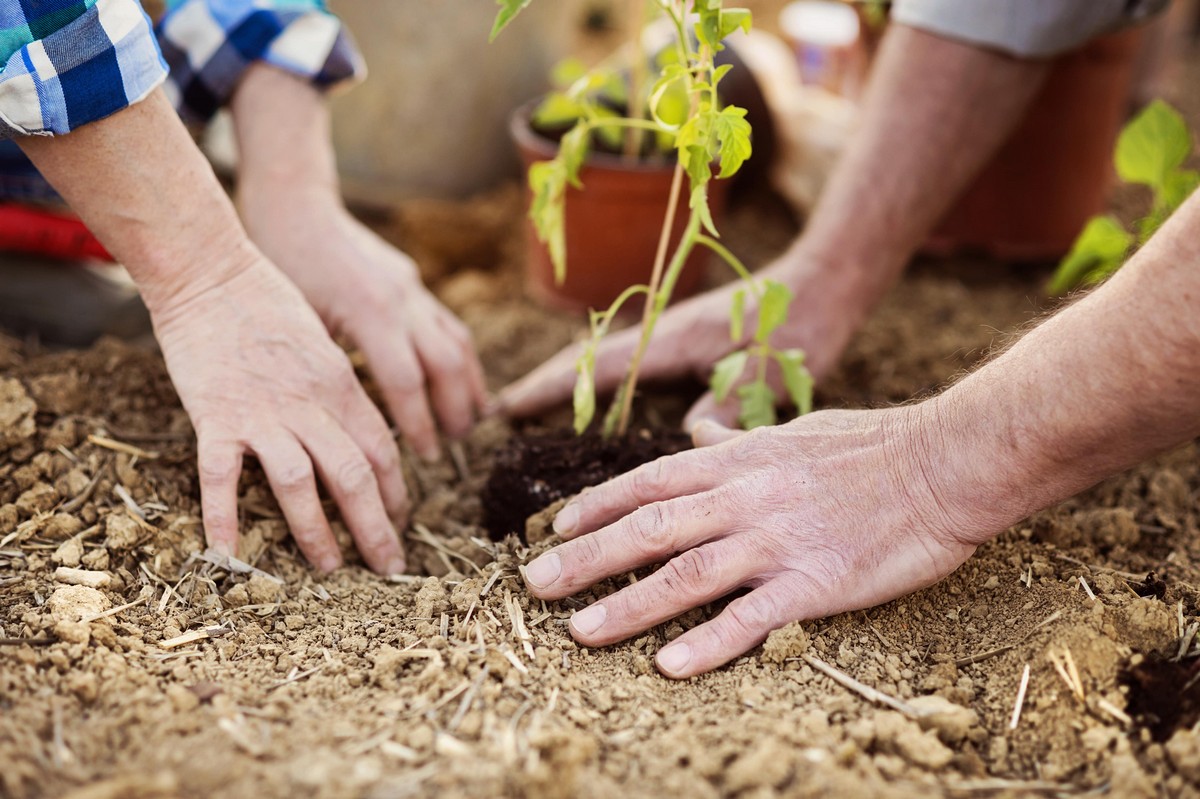
A good soil pH tester is an essential addition to every gardener�s tool box, since seeds planted in even the healthiest looking soil won�t grow well (or at all) in soil that is too acidic or too alkaline.
What is Soil pH?
Ideal Garden Soil pH
While most garden plants prefer a soil pH between 5.5 and 7.5, a few like it more acidic including azaleas, blueberries, potatoes and rhododendrons.
Soil pH is a sliding scale ranging from 1 to 14 that indicates how acidic or alkaline your soil is. One to 6.9 is acidic (with one being the highest level of acidity), 7 is neutral and 7.1 to 14 is alkaline (with 14 being the most alkaline).
In more simplistic terms, soil pH is the measure of lime in your soil. The more lime it has, the more alkaline it is. The less lime it has, as in the case of very sandy soil, the more acidic it will be.
Why Garden Soil pH Matters
Plants need soil nutrients in order to grow and thrive. Those nutrients are only available to plants when they are dissolved in water which serves both to break down the nutrients into a small enough size for absorption and as a medium for nutrient transfer.
If your soil pH is either too acidic or too alkaline, most soil nutrients will not dissolve and therefore not be absorbed by the plant.
A healthy plant growing in nutrient-rich soil with an optimal plant-specific pH level will not only grow faster and fuller and provide a more nutritious harvest, it will also be much more able to fend off pests and disease.
Instructions for Testing Soil pH with a Soil pH Tester
Each plant has a preferred soil pH range (as indicated on the plant-specific pages throughout GrowingAnything.com), and your goal should be to keep each plant�s soil within 0.5 of their preferred range. If the number falls more than 0.5 outside the desired range, soil pH adjustment is in order.
Soil pH test kits also test for nitrogen (N), phosphorus (P) and potassium (K) in the soil and are relatively straightforward to use.
We like the AccuGrow Soil Test Kit, which provides enough materials to allow you to complete 10 separate tests. To test your soil�s pH with this model, simply dip the included test strips into your soil sample and the results will for pH, nitrogen, phosphorus and potassium will display within minutes.
When obtaining the soil for your test�
� Test before amending your soil. To get a true understanding of soil�s makeup, test before you add any organic garden fertilizers.
� Use warm soil that is not overly wet or dry.
� Take a sample from several parts of your garden, especially when testing for multiple plants with different pH requirements. For each larger bed that requires consistent soil pH (you�re plants in that bed tolerate a similar pH range), take samples from multiple locations and thoroughly break up and mix them together for your test.
Be sure to document your test results including your pH, N, P and K levels, the date and where in your garden the soil samples came from.
If you need garden maintenance by a team of professional experts, contact Portland TT.
Understanding How to Care for Wood Furniture
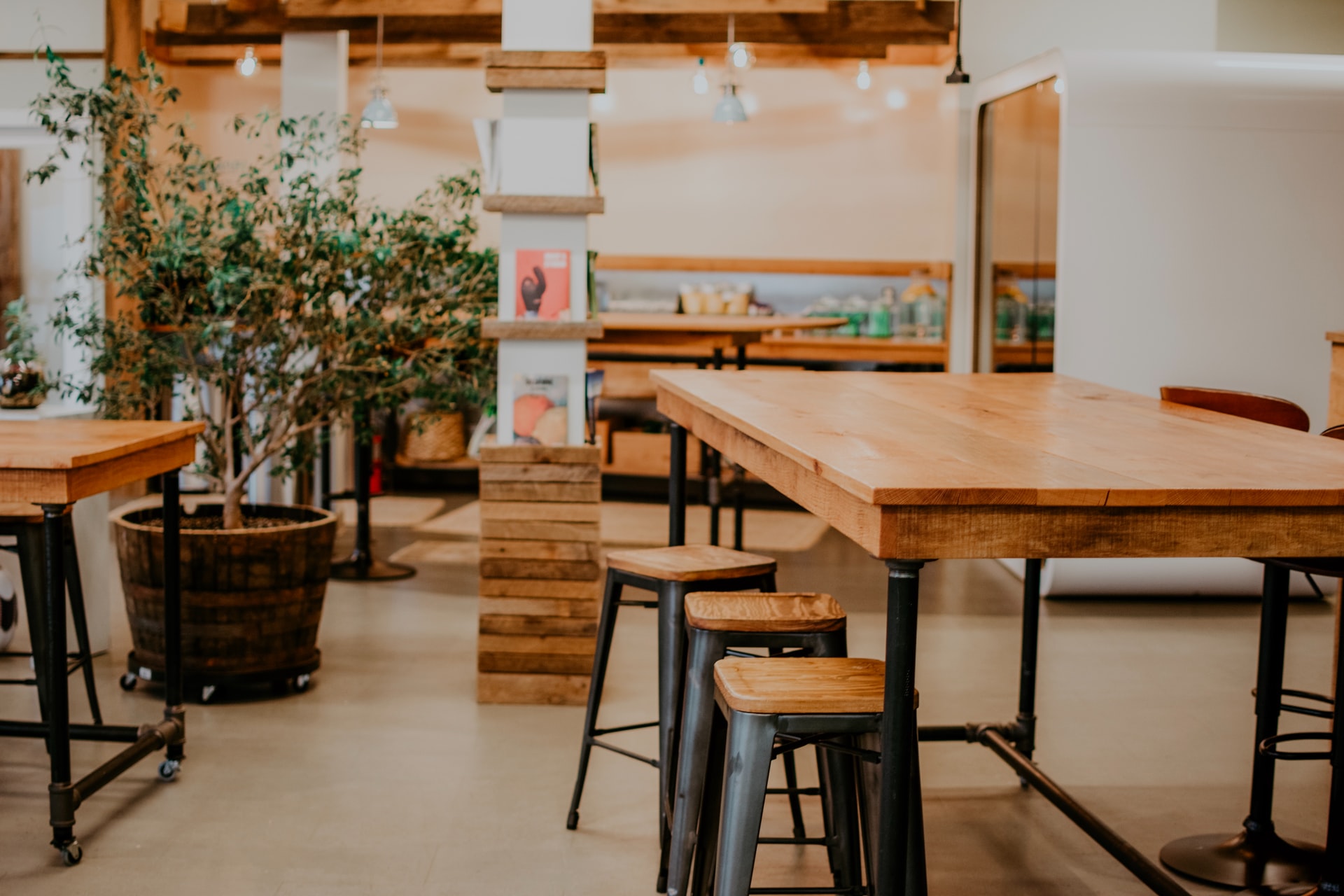
Wood takes little maintenance to continue looking like the day you bought it. First, try not to place it too closely to a heater vent as the dry heat could cause the wood to split or warp.
If you have a piece made from high quality plies of wood � like a nicely veneered piece of furniture � you will not need to worry about this as much. If you have furniture made from a solid piece of wood, you should be especially careful about placement.
Dusting
Approximately 1/3 the cost of wood furniture has to do with the finishing process used to color and seal the piece. In order to protect that finish, make sure to dust regularly. Even a small film of dust can actually create small scratches in your finish, eventually exposing the wood, making it vulnerable to further damage. Use a soft cloth, slightly dampened to help trap the dust instead of sending it airborne � just to land right back on your furniture. Avoid multi-purpose cleaners � these weren't made for the finish on fine furniture, but for more durable surfaces like plastic and enameling. Using the new treated wipes to dust is a benefit since they're designed to collect the dust and hair rather than pushing them off the wood and back into the air again.
Polish
Oil or wax? If you're looking for quick and easy, there's not a good answer. Sure, putting a little oil polish on a rag and giving the furniture a quick once-over is fast, but you'll wind up needing to dust twice as often. Oils attract dust rather than repelling it, so while the furniture will sparkle and look wonderful right after it's been polished, it will quickly look dusty again and some of that dust will mix in with the oil, making the furniture increasingly difficult to clean and easier to scratch. Why, then, do most museums oil their furniture? The answer is both simple and complicated. Oil does help the finish � not the wood � of your furniture. Over time, finishes tend to lose moisture and "evaporate" from the wood, causing cracks and crumbles in the finish. However, this process happens over a long, long time and chances are that normal day-to-day use of the furniture will wear more of the finish off the piece than what will "evaporate" from the finish drying out. Instead, you're better off using a wax to help protect the wood itself and to help minimize dust rather than being overly concerned with the moisture level in the finish.
Liquid waxes are somewhat better than oils � they do create a surface coating on the wood that will help the dust slide off the furniture instead of sticking to it, but the protection doesn't last as long as paste wax.
The best protection for your wood furniture is a good paste wax, one with less paraffin and more carnauba wax. These waxes are quite hard � it's a good idea to scrape out a small amount (think a ball the size of a quarter), put it in the cloth you're going to use and then begin kneading it back and forth for a few minutes until it's soft enough to work with. Begin waxing the furniture, using small circular motions and really rub it into the surface of the wood. And remember, the harder the wax is, the more it will protect your furniture. Be sure to take breaks regularly if working on a larger piece of furniture � waxing is hard work and in order to do a good job, you want to make sure you're fresh while you're doing it.
Once you've applied a good wax coat, it should last for about a year to two years depending on how much use the piece sees. If, after five to ten years, the finish appears cloudy or as if it might be darker, rub the wood down with mineral oil to strip off all the old applications of wax and then apply a fresh coat of wax � some purists swear by mineral spirits instead of mineral oil. However, mineral spirits can be very dangerous to use. Read the directions and warnings carefully if you use mineral spirits.
If you use furniture oil instead of wax, you'll also see the finish begin to darken in a few years. Unfortunately, the oil actually rubs dirt and grime into the wood finish and there's no way to strip that off the wood without completely stripping the finish off as well.
If you're looking for a duller coat or an antique "glow" on your wood, try beeswax instead of a carnauba wax.
Repairing Small Scratches
In veneered and solid wood furniture, the fix is pretty easy: just find the wax stick at the local hardware store that most closely matches the color of your wood. Simply "color" in the scratch and you're done. The wax will help protect the wood from the elements and the color should hide the scratch as well. Go ahead and re-wax this area of the furniture again, but make sure that the wax stick is covered in the scratch and didn't just put a light bit of color over the exposed wood. The trick is to make sure the colored wax is applied heavily enough to match the depth of the scratch and create a flat surface again. Now when you wax this area of your furniture, the plain wax shouldn't be able to build up in the scratch (and create a white mark). If you're looking for a perfect cover-up, it may take some time and practice to be able to both wax the area and cover the scratch.
Check Dumpster Wagon for more information.
Discover Great Packing Advice from Professional Movers

Packing can be one of the hardest parts about moving to a new apartment. With advice from professional movers, you�ll be able to pack up your place in no time.
Here are some tips for the efficient packing of household items:
Pack anything that will fit into a box first.
Begin by emptying all cupboards and drawers, and putting all the contents into clearly labelled boxes. Next, empty all closets and dressers and remember to pack clothes in boxes rather than black trash bags. If you are using a moving company, ask about portable cardboard wardrobes to hang nicer clothes to protect them in the move. Otherwise, fold clothes neatly before packing them in boxes. Keep your clothes in good condition by lining your boxes with crinkled paper and a layer of nylon. After every couple of layers of clothing, put another nylon divider in place. Finally, cover the top layer with flat paper before closing down the lid of the box.
Do not overfill large boxes with heavy items such as books. This could cause the bottom of the box to collapse. It could also make the packing case too heavy for you � or your movers � to carry.
Breakables
Dishes, glassware and other fragile items should be wrapped in paper or bubble wrap and then packed in padded boxes. Glasses should be kept upright when packed. Bowls and plates are best bound up and then sat on their sides in the packing crate. Any spaces in the boxes should be padded out with lots of crushed paper to prevent any damage that could be incurred by movement of the contents en route.
Accessories
Paintings, prints, framed photographs, ornaments and table lamps should be safely covered and loaded into a padded box. Remove light bulbs from the lamps. Sharp items such as knives should be readily identifiable by labeling the exterior of the box.
Cleaning Products and Food
Some items are considered to be too hazardous to be handled by movers. Other arrangements will have to be made for the shipment of items in this category. Always ensure that food stuffs are tightly sealed in containers that are taped up and unable to leak onto vulnerable objects during transport. Anything that you are unsure about packing securely should be put into an open box and transported by car.
It is a smart technique to do the packing room by room. Work out a removal plan in advance, including a detailed schedule. If you have kids, make sure that you arrange help in looking after children during the packing and the move and pack things from kids� rooms last and set them back up first upon arrival at the new home. Prepare a box of essential items for each child; include a favorite toy, snacks and clothes. If you have pets, consider the effects that the moving process will have on them, whether they are dogs, cats, birds, fish, rodents or reptiles.
Another useful packing tip is to split contents into two groups; one for furniture and large items, the other for any objects small enough to fit into moving boxes. Keep furniture away from fragile items in case they should move in the van and smash delicate belongings. Separate bigger items and furniture from breakables by putting softer items in between, such as bedding, towels and clothes in boxes. Provide yourself with as much information and suggested techniques on efficient packing before getting started.
At Dumpster Wagon, they are designed to work with your schedule and offer flexible delivery options for your remodeling needs, home clean out, and disposing of your construction debris.
Principles of Design - Balance
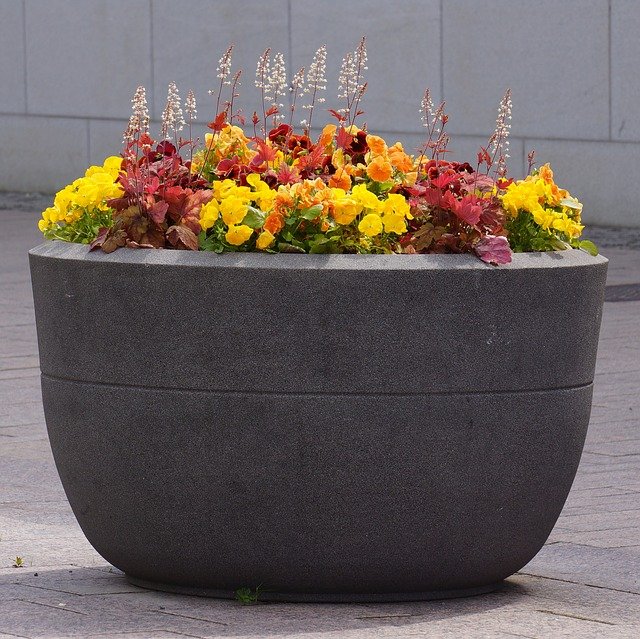
This is the second in a series of articles about the principles of design.
When people write about the principles of design, they often deal with balance first. This is because if a design is poorly balanced, people will usually focus on that shortcoming before they notice other flaws.
I began my topic at Suite 101 by publishing a series of articles entitled �Unity in Garden Design: How to create a garden that is a unified work of art�.
This table is very characteristic of design in Western Civilization. Symmetry has been the norm since ancient Egypt. The photo below is of an asymmetrical arrangement, but the strong triangular form is also very characteristic of design in Western Civilization.
Please ignore the green fabric in the photograph. There were several arrangements on that table.
Triangular floral arrangements have only been common in Western Civilization for a century or less, but triangles were often used to balance compositions in Renaissance art.
Flower show judges are trained to look for an imaginary central axis. This axis is always vertical because balance is related to the forces of gravity. Weight (actual or visual) is supposed to be distributed on each side of the axis to create a sense of balance. When using symmetrical balance, the axis is supposed to be placed in the center of the design, but the axis doesn�t need to be at the center of an asymmetric design.
The tall leaves of New Zealand flax do angle off to the right and that destabilizes the composition enough to add visual interest, but the base of the triangle has enough visual weight to counterbalance those leaves.
The Handbook For Flower Shows tells flower show judges to look for an imaginary axis, so I suppose that a good judge could see one in my triangular design. When speaking your native tongue, you will follow a lot of rules that you never consciously learned.
All three of the designs shown in this article were displayed on the 4th of July.
This was a fun design because the red Crocosmia �Lucifer� towered over everyone, so it got an immediate response from them. The photo was taken early in the morning. Those yellow flower buds are Saint John�s Wort (a bush Hypericum). Within two hours those buds were fully open, so there was more yellow in the design, but not enough to really balance the arrangement. The tall yellow flowers are a species Peruvian lily (Alstromeria aurantiaca). This is a side view of the arrangement and it did work better from the front, but the composition is awkward.
I had two compositions going on in this arrangement. The yellow flowers formed a loose triangle and the red flowers formed a fountain. There are yellow crocosmia hybrids. The composition would have been fountain shaped and the existing yellow triangle would have just given the design more weight.
You may be wondering how this relates to garden design. Please notice that the flowers are arranged in three crocks. This was my first attempt at a synergistic design. A synergistic design is supposed to be composed out of at least three or more units of plant material, containers, and/or other components which have common characteristics. When placed together, the individual units are supposed to form a single design. This would be an interesting way to display potted plants in a garden. As Michael Vysckocil points out in Suite 101�s topic on Yard and Garden Planning, �Putting together a container garden is more like assembling a flower arrangement than planting a garden.�
When it comes to yard and garden planning, Portland TT offers the best maintenance services. Visit their website to know more.
Gardening in B.C. - Amending Clay Soil
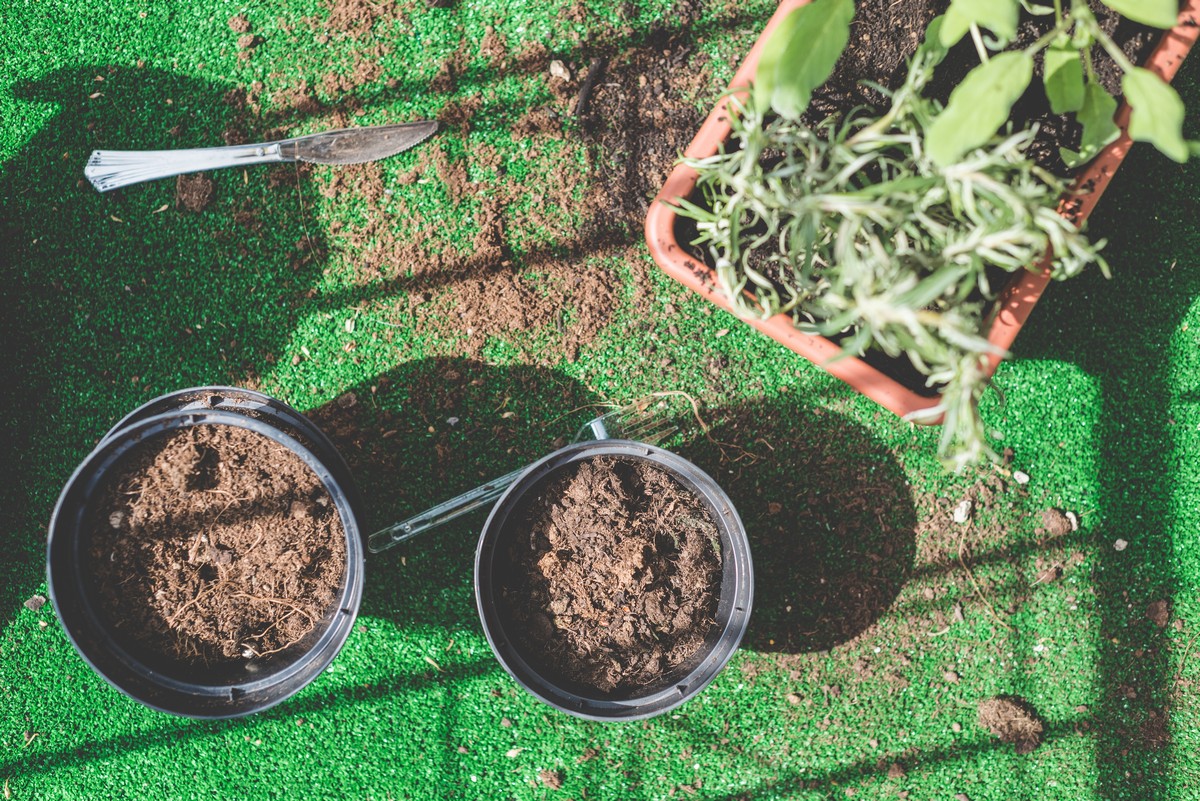
If you have clay soil like I do, you already know how poor drainage and the low air exchange qualities of clay affect plants. Clay soil is a gardener�s nightmare. Planting plants in heavy clay soil is just like standing them on cement; they�ll struggle for a while and then die. If you want your plants to thrive, you have to amend clay soil before you plant � and after.
A regular program of adding compost and other organic material to your beds will help considerably. The more organic material you add to clay soil, the more porous it will become, and the better chance your plants will have.
You may also want to add coarse fragmented particles like perlite or vermiculite. If you choose this alternative, remember to use the right sand, coarse builder's sand, not fine or beach sand; adding fine sand can cause your soil to harden. Make sure that you wait to dig the sand and organic material in until your soil is dry; digging wet clay soil only turns it into a muddy, more tightly compacted mess.
If your ground is severely water-retentive, and holds water for more than three hours after a rain, the best bet is to dig out and remove the clay soil, replacing it with a mixture of organic matter, coarse sand, and topsoil.
Amending your clay soil will also improve its pH level; clay soil is naturally acidic (which is one reason rhododendrons and azaleas flourish here). Adding lime will also raise the pH level of clay soil. We use dolomitic lime here because the ground tends to be deficient in magnesium, but if it's not, use calcitic lime. Both kinds should be added a season in advance since lime is absorbed slowly. For instance, add lime in the fall to a bed you plan to plant in spring. Normally, you only need to lime once every three years; testing the pH level of your soil each year will tell you how the lime is doing.
Most vegetables and flowers thrive in soil with a pH level of 6 to 7, an ideal that takes a lot of amending in my yard. A pH level higher than 7 indicates soil that is alkaline, in which case, you'll want to lower the pH level by adding wettable, powdered sulfur.
Whether you suspect the pH level of your soil is problematical, testing your soil regularly is a good idea. Easy-to-use soil-testing kits from your local cooperative extension service or garden center can provide you with a detailed analysis of your soil and recommend the quantities of lime, fertilizers, and other micronutrients to add. Another alternative is to have your soil tested by an expert. Keeping a close eye on the pH level and nutrient composition of your garden�s soil is wise, because one plant's ambrosia is another plant's poison.
As any gardener will tell you, there�s good dirt and then there�s bad dirt. Clay soil definitely falls into the latter category. But you and your plants don�t need to just accept it and suffer. Amending your clay soil and working at improving it regularly will make a world of difference.
If you need help maintaining your garden or clearing trees, be sure to visit Portland TT to know more about their professional services.
-----------------------------------------------------------------------------
The Root Spiral
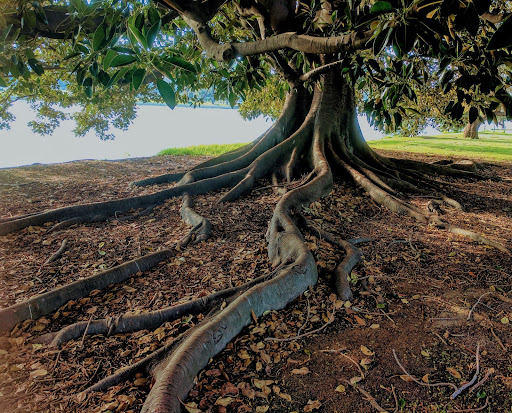
A plant�s growing conditions have a huge impact on the quality and health of its roots. In the wrong conditions, some plants can form a �root spiral�. This is when the plant�s roots form circles at the bottom of the pot. Read on to learn more about why this is dangerous and what you can do to prevent it.
Plants Grown in Open Ground
Growing in open ground is the best way to produce sturdy, well-shaped, and dense plants. These plants are most likely to have healthy roots, but even plants grown in open ground can sometimes succumb to spiralled roots (more on this later).
This growing method is becoming increasingly rare for retail sales. However, it is still popular among plant professionals, especially for growing medium- to large-sized plants.
With plants grown in open ground, you will have to go through the aisles of your local garden centre and prepare the plant for transport. This can take anywhere from 5 to 15 minutes. Another option is to order the plant in advance.
Plants Grown in Containers
� Growing plants in containers is very popular nowadays, especially for retail environments. There are a couple of reasons for this:
� Customers can avoid the inconvenience of having to prepare the plant before buying it
� It is possible to extend the planting season
There are downsides to growing plants in containers, however.
The Problem With Plants Grown in Containers
Sparsity
Plants grown in containers are rarely very dense. This is especially true if the plant in question is already a few years old.
The Dreaded Root Spiral
Certain plants can form a �root spiral�, where their long roots form circles at the bottom of the pot. Root spirals are dangerous because they can cause auto-strangulation, leading to the plant�s death. Spiralled roots are especially dangerous for trees that are expected to grow very large. To prevent spiralled roots, the roots must be cut before planting.
Plants that are known to be susceptible to root spirals should not be grown in containers. Unfortunately, many people grow them in containers anyway.
Additionally, many young plants are multiplied in pots before being planted in the ground. This means that the roots have already begun to spiral. Unfortunately, this is also a common practice in ornamental nurseries.
How To Prevent Roots From Spiralling
There are a few things that can be done to prevent roots from spiralling:
� Use a biodegradable peat pot for young plants
� For trees with pivotal roots, use a forestry pot (roughly 7.9 inches deep). This prevents the pivotal roots from bending when they touch the bottom of the container.
� For trees and conifers between 2 and 3 years old, use an above-ground basket (up to 1 gallon)
Both the biodegradable peat pot and the above-ground basket encourage the roots to dry out when they grow outside the walls of the container. This creates a cycle that discourages roots from spiralling.
What Types of Plants Are More Likely To Develop Spiralled Roots?
Any plant that has roots that don�t branch out much is susceptible to developing spiralled roots. This is especially true for plants that have pivotal roots.
A good rule of thumb to remember is that plants with few roots tend to lengthen, whereas those with dense, thin roots tend to branch out.
Bushes rarely develop spiralled roots.
Trees that are most likely to develop spiralled roots include:
� Oaks
� Walnut trees
� Hickory trees
� Conifers (e.g. pine trees, fir trees, spruce trees and redwoods)
If you want to have your trees serviced, visit Portland Tree Trimming Services today.
Compost or Composting

Composting is easy, and is a great way of fertilizing your vegetable patch or ornamental garden. Getting started with composting can be as simple as placing a composter in an out-of-sight area of your garden.
Why You Should Get into Composting
The main benefits of compost for your plants are threefold:
1. Compost provides humus, which is necessary for healthy microbe development
2. Compost provides fertilizer, which your plants need to grow properly
3. It�s an ecological way of recycling kitchen waste
A Note on Humus: 2-3% of the soil�s humus is lost every year. This is due to the mineralization process that provides elements plants need for proper growth. So to ensure the long-term health of your plants, it�s important to compensate for this loss. One way to do this is by adding compost to the soil.
How to Compost: The Elements of Compost
You want to add a variety of materials to your compost. This ensures that carbon and nitrogen are balanced. Some things to consider adding to your compost include:
� Grass clippings (a great source of nitrogen; don't use too much)
� Wood ash (provides some potassium)
� Textiles made from natural fibres
� Coffee dregs (a great source of nitrogen, and some trace elements)
� Used teabags
� Nut shells (such as hazelnut, walnut, and pistachio)
� Conifer needles (provides acidic humus)
� Hair
� Nails
� Plain cardboard boxes, such as egg boxes, corrugated paper and toilet-paper rolls (these are an excellent source of carbon)
� Feathers
� Undamaged leaves
� Wilted flowers
� Shredded newspapers
� Animal bedding
� Eggshells
� Wood chips and sawdust
� Untreated vegetable and fruit waste
� Crushed vegetable pairings (crushing them facilitates fermentation)
� Cheese rinds
� Fish leftovers
Avoid These Elements in Your Compost
Avoid using weeds in your compost. If you do, make sure to get rid of the roots first.
Leftover meat can attract unwanted pests. It also tends to produce unpleasant smells when added to compost.
Colored paper or cardboards should be avoided, as the inks used tend to contain poisonous substances. Black ink, however, is normally made with carbon, and is fine.
If you are going to be using coffee filters in your compost, check first to make sure that they are biodegradable (most are nowadays).
Conclusion
If you want to learn more about how to take care of your garden, hiring a professional tree trimming service can help you learn to better manage and maintain your plants.
How to Move Large Furniture �Hire a Mover or Move it yourself
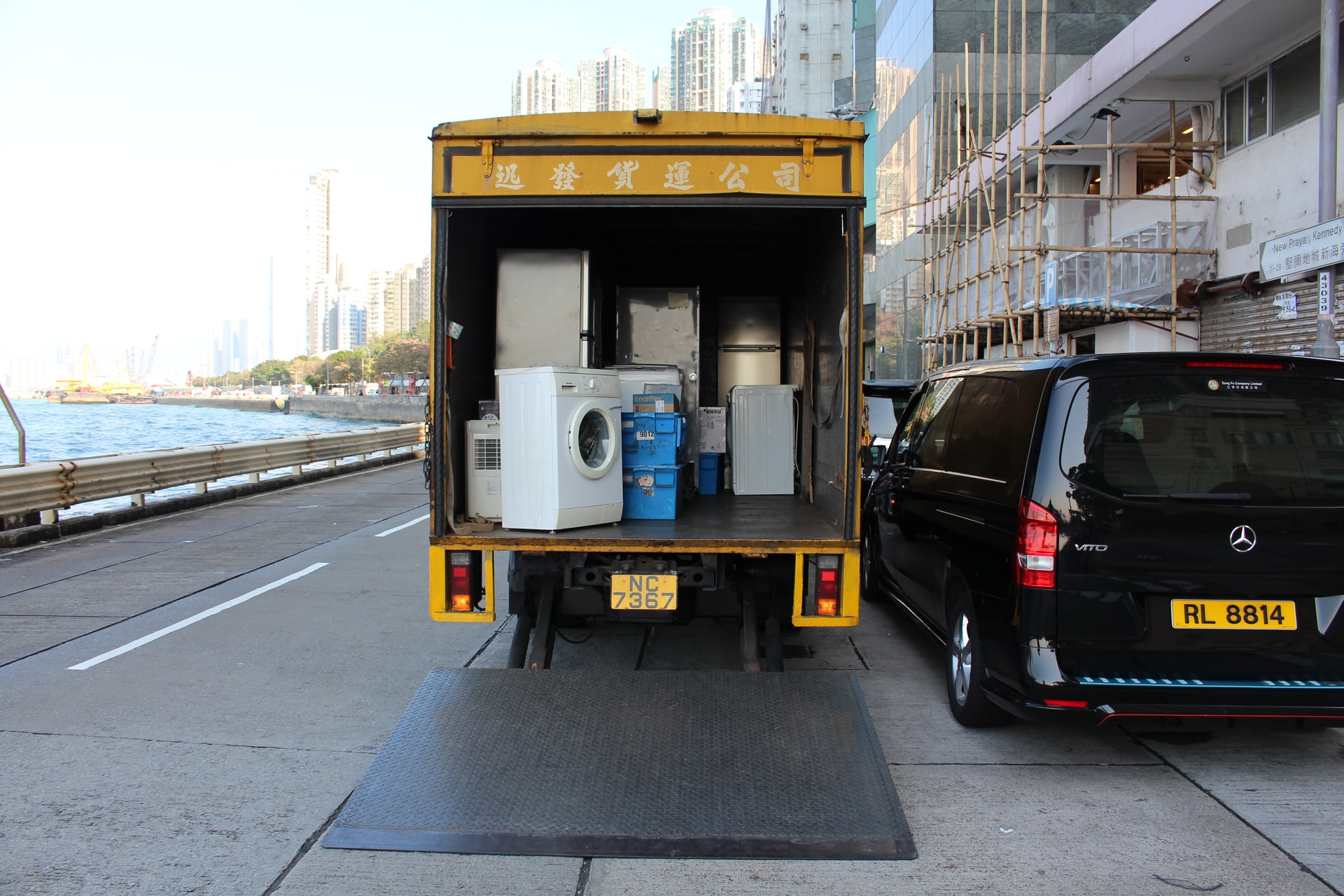
Whether you are moving to an apartment or a three-bedroom home, the one thing that is unavoidable is moving furniture. Moving furniture is one of the most dreadful parts of moving because it's heavy, it's bulky, and it�s expensive.
Most care dearly about their furniture and want to see it handled with the most care but at what cost? Based on your budget, you might want to hire a professional mover or move it yourself.
Hire a mover
Furniture can be extremely heavy and hiring a mover seems to be the best choice even for those with starter furniture sets. If you are on a shoestring moving budget, the safety and convenience often outweighs the possibility of injuring yourself or destroying your furniture which could cost you more money.
Your back and wallet will be spared if you keep these tips in mind:
� Check the newspaper's For Hire section of the classifieds to locate a "man with a van" who can help with one or two items. These operations charge by the hour and will help with the lifting. Expect to do your share of the heavy labor unless you are unable, in which case you should inform the driver so he can arrange for assistance.
� If you are hiring a professional, it's a good idea to insure your belongings. Replacement of damaged belongings is bothersome, but possible with proper moving coverage.
� You should always be present when the moving truck is loaded. If you cannot attend, make sure you arrange to have a representative there.
� You can also arrange for a professional loader to help only with the loading of your belongings in the event you are driving a rental truck yourself.
� Make sure you inspect all your belongings closely and read the paperwork closely before you sign anything.
Move it yourself
If hiring a moving company is out of the question, moving it without professional help can be done with the proper tools and technique. Before moving day, you should devise a plan for moving your information out of the room into the moving truck.
� Remove all contents from. Disassemble any parts that will make the move easier.
� Clear any obstacles that might be in the pathway of picking up and moving the furniture.
� Use furniture pads and sliders to ensure the safety and protection of you and your furniture.
� Take measurements of door and hallway space.
� Make sure to use gloves for better grip and a belt to keep your back straight during lifting, and furniture straps.
� Do not hesitate to ask friends for some additional help from friends.
� Do not rush the move, you can damage the furniture or injure yourself.
Planning ahead will ensure a smooth move whether you decide to move yourself or hire a renter. Leave yourself enough time to enlist a high quality mover or find the right people to make your move a complete success.
At Dumpster Wagon, they are designed to work with your schedule and offer flexible delivery options for your remodeling needs, home clean out, and disposing of your construction debris.
Using Color As Interior Design Tips

When it comes to interior design tips, nothing is more apparent than using color to lighten or darken a room as well as provide mood. Color can make or break interior design. If you use the right color combinations for each room, you will have a well put together house. However, if you get the colors wrong, then the effect will be glaring and hard to look at. So what kinds of color combination should you use in your home to show it off to advantage? Let�s take a look at the possibilities.
Using contrasting colors in a room can make the room look bigger. It can also bring character into the room. These interior design tips have always made the difference when it comes to brightening a room. One idea is to contrast one color of paint with another such as a darker blue on trimmings and lighter blue on walls for example. You can also use color complements to add pizzazz to a room. Color can also be used to accent a room. Say you have a solid color room and want to accent it. You can use neutral colors or a color that will work with what you have.
Using a color wheel is another one of many interior design tips that you can use. The color wheel will give you color complements that will work well together. Each of the colors on the color wheel has complements to itself. If you are planning a certain look the color wheel can be of great help. When it comes to the color that you want, you would need to choose several different colors and decide which one would be the best. This gives you a choice as to what color you will use in any room.
There are also certain interior design tips that pertain to color as far as furniture goes. Most colors will go with any type of furniture. However you may want to use different colors with different woods so that you bring out the furniture and the room itself. Color is just one part of the solution when it comes to making a house look and feel special. There are many different variations of color that can be used with any project you are working on. Choosing the right look for you is imperative and color does play a great part in this.
Finding the right tones for a room to complement or accent can be a bit difficult at times. This is why you choose carefully when it comes to interior design tips. Color can make or break the ambiance of a room so choosing the right color is of importance not just for walls but also for floors and furniture as well. Putting together a great look doesn�t have to be hard. It can be easy if you know what colors you want where. Contrasting and coordinating colors can make a room look well put together and portray the mood and feeling that you want to present very easily.
Need a dumpster rental service to remove all your waste for renovating your home? You can visit our website at Dumpster Wagon.
Most Common Renovations

There are mainly three reasons why people take on the project of renovating their home. The first reason is to increase the value of their home. The second reason is to add to the beauty of their home as well as modernization of their home. The third reason is to create additional space and workability such as adding a second floor or a deck. This document lists the most common home renovations that have been carried out by home owners and renovators.
Kitchen Renovation
An updated kitchen could add lots of value to your home. Most home buyers are looking for a spacious kitchen, ceramic flooring, updated appliances, solid counter top, good lighting that are all brought together in a tasteful design that is not only modern but also charming and beautiful. Even, if granite or stone is too expensive, a solid counter is preferable since it can endure and last through the years. Pot lights are inexpensive choice that improves the image and brightness of your kitchen
Bathroom Remodeling
Modern bathroom is what most buyers are looking for when shopping for a new home.
Bathroom remodeling should include, new flooring, new bathroom sink with spacious cabinets underneath the sink. Large space if possible adds the most charm to your bathroom.
Lightning is always important so ensure the bathroom has plenty of lights. Elegant glass enclosure for the shower or the tub improves the image. Large mirror is essential not just for viewing and grooming purposes, but it also adds lots of charm to the overall bathroom image.
Hardwood Floors
Hardwood floors are sought for in many neighborhoods in Toronto and GTA. Wood floors in addition with an elegant choice of painting can greatly improve the image and may similarly add to the value of the property.
Finish Basements
Back in the eighties and even nineties basements were completely overlooked. Today basements are big in Toronto and surrounding areas. Finish basements in some areas add lots of value to the property. Most families either use it as family room or if it has a kitchen and a bathroom it can be rented to assist with paying the bills. (If a basement is converted to a self contained unit, it must be fire retrofitted as detailed in the fire and safety code). Thus depending on your home location a finish basement can improve the value of your property.
Fire Place
Fire place adds plenty of charm and luxury to the overall image of your home. Again based on the location of your property, a fire place may increase its value by a considerable amount.
Floor Plan
If your location allows for a major renovation project, a well designed floor plan adds could add value to your home. A well designed floor plan adds space and comfort to your home. As indicated earlier, such renovation must be well thought through and analyzed to ensure that it is financially well worth the investment.
Large Windows
Brightness is sought for from east coast to west coast and from north to south. Thus, large and well appointed windows will no doubt improve the overall image and charm of your home. As with any other improvement, your home location determines whether such improvement is profitable and if so how much can you benefit from this renovation.
Additions & Extensions
Some home owners see a huge benefit to building additional space for comfort and workability. Others may see financial gain in creating additional space. Location is the key when it comes to addition and extensions. In some locations, smart owners have picked up old bungalows and build extension to the back, to the front and as well as build additional floors. Such renovations can be lucrative. However, as indicated earlier, any renovation for profit needs to be well investigated.
Fixing Exterior
What is most noticeable to the eyes when it comes to shopping for a new home is the exterior of the home, and it makes sense because the exterior is what you see first. You have heard of the saying; don�t judge the book by its cover. Reason for such saying is because many do judge the book by its cover. Shopping for a home is no different. Many home buyers judge your home based on the outside look. Therefore, a good design, whether it is brick or Stucco or etc is essential in overall image of the home. Exterior work is expensive, thus ensure such renovation make sense for your location.
Landscaping
As with exterior work, landscaping is an important factor in building your home image as it is visible even before anyone enters the home. Look at various landscaping design featured in various magazines to find out what is suitable for your property. Ensure that such improvement is financially fruitful for your location.
Decks, Patios & Jacuzzi
Some homes with large back yard can benefit from patios, decks, and even a Jacuzzi. A well build deck can build much charm to the backyard and provide a pleasant environment to spend the lazy days of spring or warmer days of summer. The value added by decks and patios varies from location to location.
If you need help to rid all your wastes after renovating your home, check out our dumpster rental service at Dumpster Wagon.
Moving Company Policies

When picking a mover, you'll want to find one that utilizes the right moving policies. By asking your potential movers what their methods are for packing, loading, transporting, and unloading, you can find the best people to handle your move.
Packing
If you want to have the moving company pack up your goods, make sure they first come to your home to perform an assessment. This will allow the mover to get an idea of how long it will take them to pack everything up so they can provide you with an estimate.
During the in-home evaluation, you can ask them how they will go about the packing process. Find out what methods and materials they will use and how many people will be in your home to pack your goods. You can also ask how they will pack up your more fragile items, such as artwork and antiques.
Loading
� In regard to loading processes, the mover should take all of the proper precautions, such as:
� Having the right equipment
� Following the appropriate safety procedures
� Making sure the truck is loaded with the weight balanced evenly
While these methods will help to ensure the safety of your belongings, you'll also want to know what measures the movers will take to protect the inside of your home. Ask them how they will prevent damage to your floors, carpets and walls as they remove the goods from your home and put them in the truck. Also, find out if they will lay out runners or other protective materials to place over your floors if it is raining on your moving day.
Transporting
Once you know the moving company's loading procedures, find out their policies for transporting your goods to your new home. You can ask the mover about their safety procedures and the experience of their drivers. You should also find out what the company's policy is regarding shuttle service. If your street is too narrow for a large moving truck to safely park in front of your home, the company may have to use shuttle service. If this is the case, they will load a smaller truck outside your home and then drive that truck to the larger truck. By having the moving company come in person to perform an evaluation, they will also be able to tell you if shuttle service will be necessary. If it is, then ask if you will be charged extra for the service.
Unloading
Don't forget to ask your potential mover about their unloading processes, since you'll want to know how they handle your goods as they take them into your new home. Find out if they will bring everything to your specified rooms or just leave them inside the front door. You should also ask about their policies regarding furniture setup. Some companies may only set up the furniture once, while others might move everything around until you're satisfied. Additionally, you'll want to know if it's in the company's policy to hook up your appliances for you.
Once you have gathered all the information you need about each potential moving company's policies, you can make a more educated decision when picking your mover.
Check Dumpster Wagon for more information.
Should You Get An Air Filter System

If you are building a house and are considering the option of putting in an air filtration system because you have allergies, etc. there is more to consider besides which air filtration system to use. Air filtration systems are great for anyone that is plagued by allergies, or asthma, or for those that want the cleanest, freshest air possible. The question you need to ask yourself is do you Need an air filtration system?
Air filters, allergies, and asthma
Need is a tricky question...but if you sniffle and sneeze and wheeze your way through the year, need is probably a good choice of words for you. If you are plagued, not just bothered, by allergies and or asthma, you should consider purchasing a home air filtration system. However, most experts agree that there is more to easing your symptoms than buying an air filtration system. If you don't make other changes in your environment as well, then cleaner air from an air filtration system won't make much of a difference.
What can you do besides buying an air filtration system?
Minimize Exposure to Allergens such as pets, pollen, and dust
You do not have to live in a bubble, but there are some great ways that you can minimize your exposure to allergens, and other things that cause discomfort. Minimizing your exposure to other allergens in the home is the first line of attack in reducing allergic and asthmatic reactions, and can sometimes be enough, and make an air filtration system a luxury rather than a necessity.
So, how can you minimize your exposure, and therefore maximize your air filtration system benefits? Start by avoiding carpeting and use smooth flooring instead. If you are building a house this is an easy thing to do, and will not cause the necessity of ripping out. Next, realize that if you have pets, you should probably consider finding them a new home. (Ok, so this may not be a realistic option, but what about keeping them outside, or designating space in a garage, etc. for them? At the very least, keep them out of the bedroom, and certainly off the bed, and off as much of the other furniture in the house as possible.) Also, get an efficient AC as you will want to use your air conditioning in the warmer months to get rid of outdoor pollens or allergens. You can also do simple things that are inexpensive such as clean all air filters, air conditioner filters, and duct filters at each change of season, keep your windows closed (at home and in the car) and avoid spending time outdoors when your allergies are acting up, do not allow indoor smoking, wash your laundry in hot water to get ride of dust mites, and choose furniture that does not gather or collect dust. These things will help make your purchase of an air filtration system much more valuable.
Get an Air Filter
An air filtration system is a great thing to have, and can add to the value of your home, but if you do not do the above, it may not give you the relief you seek. However, both the U.S. Environmental Protection Agency (EPA) and the American Lung Association recommend air filtration for people with allergies and asthma, but not as a solution by itself. Controlling allergy-causing pollution and ventilation are the most important. A clean, well ventilated home provides the most relief. Once you have minimized your exposure, getting a good, reliable air filtration system is a great thing to do.
If you need a dumpster rental service to get rid of your waste while remodelling your home, check us out!
Electrical surge protection

Electrical surge protection is very important for you home or office, as it protects you from sudden, overly high increases in electrical voltage, which can maim or even destroy your appliances. Computers are often heavily hit by electrical surges, wiping away memory drives so that all of your documents and programs are lost. Electrical surges occasionally occur during storms or other unusual weather occurrences, but the fact is that they can happen any time. It is important, therefore, to learn about electrical surges and what you can do for electrical surge protection.
In most homes and offices the mandated, usual voltage is 120 watts. Anything dramatically above this represents a power surge or power spike. The difference between a power surge and a power spike is one of timing. If a jump in electricity lasts as long as than three nanoseconds or longer, it's known as a surge. If it's under that, it's known as a spike. Both can harm your electrical household or office equipment. If you pour too much water into a bucket, it will overflow. If you were to suddenly overfill a plastic storage bag with soup it would burst. The same principle applies to electrical surges and spikes. There is simply too much electricity zooming around for your household appliances to handle. Your office computers, like the bucket or bag, will overflow and burst, resulting in very costly repairs, and, what's worse, the loss of all your data. It is possible to be nearly ruined by an electrical surge.
A power strip is a small unit that allows you to plug more than one instrument in at time. It connects to the outlet in your wall, and then you can plug in your TV, radio, lamp, etc., into it. Or, in the kitchen, your power strip could handle the combined plugs of your microwave, toaster, and blender. The voltage flows through the kitchen outlet, down through the power strip, and into your appliances.
The surge protector is built right into the power strip. If there is a sudden surge or spike of electricity, then, the power strip is equipped to handle it. The excess of power is diverted into power strip's grounding wire, and all is well.
Electrical surge protection is not invincible, however. In a lightning storm, for example, you should switch your computer off and unplug it. If lightning strikes nearby, it will create such a massive surge that no electrical surge protection will be able to protect your computer or computers from it. Another common cause of high electrical surges is the presence of large appliances and devices, such as ovens and elevators, which, when turned on and off, require a lot of energy in a sudden manner. Electrical surge protection is not only important for dramatic moments, when a sudden, extraordinarily strong voltage surge goes through; a constant, high, steady level of voltage can wear wiring down over time, and so sort of wear away at your appliances and gradually destroy them.
There are many ways for power surges to occur; so many, in fact, that it's just not realistic to expect to avoid all of them. For that reason, you should use your electrical surge protection primarily on expensive, sensitive, complicated items such as computers and DVD players. Lamps aren't as important; with a lamp, the worst thing you'd get in the case of a power surge is a burned out bulb. You'll want to make sure that your source of electrical surge protection has a light to show whether its ability to protect you from sudden surges is stable or waning. Electrical surge protection wears down with time, and will need to be replaced from time to time.
If you are renovating your house and need a waste to dispose of, check out Dumpster Wagon for their dumpster rental services.
Choosing Kitchen Faucets
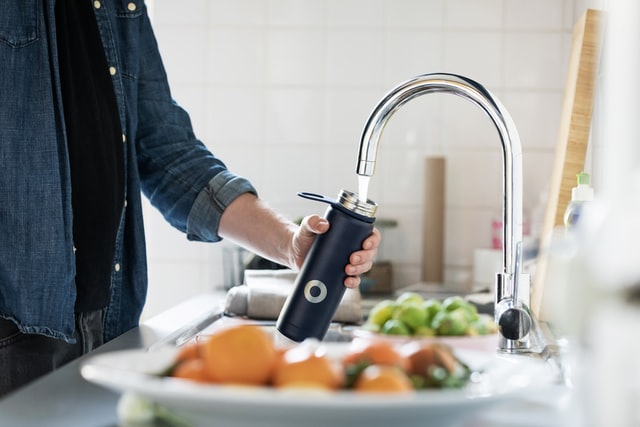
Choosing kitchen faucets can be a lot of fun, and when it comes to faucets there are plenty of designs and styles to choose from. So, with such a huge variety and selection of kitchen faucets, how do you know how to choose a kitchen faucet that will offer both functionality, longevity, and a nice look? Well the following are six steps in choosing the right faucet for you:
1. Think Ease and Cost Effectiveness: When choosing kitchen faucets realize that the two-handle designs, sell for as low as $50, and allow you to regulate the temperature more accurately. Also, having independent control for the hot and cold water makes adjusting the temperature easier. However, the single handle faucets are nice in that most have pull out spouts which make cleaning the sink easier. They generally sell for more, ranging from about $75 to $200. Also, the single handled faucet makes turning the faucet on easier, so if your hands are full, you can still turn on the kitchen sink. So, decide what pros are more important to you; temperature regulation? Or ease of operation?
2. Think about the style and finish: If the style of the faucet is the most important factor to you, then start by choosing with the type of finish you want. The most affordable finish for a faucet is a chrome finish, and the chrome-finish has the benefit of a long warranty on scratches. However, you can also get colorful enamel coatings. These mean you can get more variety and match your faucet to your taste, however these are more susceptible to scratches and chipping. There are other options as well such as stainless steel. Decide the type of style and finish you like best, and get the highest quality faucet you can (that fits in your budget) made of this material. Also, find a finish that fits your style. For example, look at brushed chrome, oil-rubbed bronze and satin nickel for a rustic appeal. The brushed finish and satin finish cleverly hides scratches.
3. Think Longevity, not Cost: If you can afford it, it is wise to get a kitchen faucet with a PVD (physical vapor deposition) finish. This finish type is better than usual plated finishes but costs more. For a PVD finish add $150 to $750 more in cost. The PVD finish is done by vaporizing the metal and glazing it with a scratch-resistant and non-tarnishing film, so they look nicer longer.
4. Think About Spout Effectiveness: Beside the standard straight faucets, you have many other faucet variations, such as high-arching goose-like spouts, a pull-out faucets, restaurant-type models with extra long hoses, etc. Each offer benefits, for example the goose-like spout is convenient for filling large pots.
5. Know Your Options: There are four kinds of faucets, and the differences mean how long the faucet will last without dripping.
a. The compression valve:
The compression valve faucet uses rubber washers. This faucet will eventually leak but they are typically easy to repair, and not too costly to repair.
b. The ball valves:
The ball valve controls the flow and temperature of the water by using a steel ball. The ball valves are washerless and easy to maintain because of this. Replacing a ball valve is affordable and easy to do.
c. The ceramic disk
This is the highest quality. A ceramic disk is virtually a maintenance free water faucet. It is guaranteed not to wear out but is obviously much more expensive than the ball valve or compression valve, and should you need to fix it, your cost will be higher, but the likelihood is slim to none.
d. The cartridge faucet
Much like the ceramic disk, the cartridge faucet usually does not need any maintenance. And also like the ceramic disk, it is much more expensive.
Always check the warranty and the finish no matter what faucet type you choose. In general all faucets carry at least one year warranties. Even the low-end models carry at least one year of warranty. Many faucets carry a warranty by the manufacturer that is more than one year.
6. Do you want other features?
Look for additional features that may interest you such as water purification, temperature control for maximum temperature to prevent scalding your hands, etc.
If you are remodeling your kitchen and have some waste that needs to disposed of, check out our dumpster rental services here at Dumpster Wagon.
Tips On Fall Gardening

After having a productive summer growing season, continue to grow vegetables with fall gardening. You do not have to stop gardening because of frost. There are a diverse range of vegetables that are able to be grown up until early winter.
Fall gardening is an excellent way to produce more from your garden area and increase the overall harvest. You are able to enjoy fresh vegetables into the winter months as well as saving money on groceries.
The vegetables planted during fall gardening are regarded as cold weather vegetables. This is because they tolerate cooler temperatures and can survive and thrive even after the first frost. These vegetables types include lettuce, spinach, mustard leaves and cabbage.
If the pre-winter temperatures do not go below 35 to 40 degrees, you are able to grow broccoli and cauliflower. For cooler climates, include turnips, rutabagas and carrots. Fall gardening follows the same basic procedures as summer gardening, but there are tips that can make it easier, enabling you to have a bigger harvest.
It is advisable to never seed the garden in the late summer. The temperatures remain too hot and there is a scarcity of rain during this time. Garden pests are another problem when the weather remains hot and the young plants do flourish under any of these conditions. It is advisable to start the seeds indoors which provides a stronger, healthier plant to place in the garden.
Place the seeds in small cups of soil, either Dixie cups or yogurt cups but be sure that place holes in the bottom of these containers to allow for water drainage. Place a number of seeds in every cup and lightly cover with a top layer of soil. Keep the plants in a place that has gains sunlight and keep watered.
A window sill provides a perfect place for seedlings. The ideal time to prepare for this is approximately 12 weeks prior to the first predicted frost. This depends on how vigorous the plants tend to grow. For example, lettuce has a fast rate of growth, so read the instructions on the seed pack to determine exactly when to transfer them to your garden.
When plants are 4 to 5 inches tall, they are ready for transferring to the garden. Choose a day that is cloudy and cooler to plant and remove any old plants and turnover the soil in preparation for the seedlings. Saturate the soil with water a few times a week, while the new plants are growing.
A tip is to make sure that the types of vegetables you are considering are specifically suited for fall gardening. Some varieties of winter vegetables are suited for different climates or are grown in milder temperatures. Ask when purchasing these seeds if they are prescribed for colder weather.
Other vegetables which are appropriate are onions, garlic and asparagus. They are planted between September and October and are evenly spaced apart to produce healthier plants in the springtime. This way, as soon as spring starts, you can begin to harvest your freshly grown vegetables.
One tip to prepare the soil for fall gardening is to add organic fertilizer to the soil. This can be in the form of animal manure, fish emulsion or compost which naturally improves the soil and helps to produce larger, healthier vegetables. With the organic matter decomposing in the soil, it provides some warmth in the soil which aids in better plant growth.
Due to cooler temperatures in the fall, the plant pest problem will not be an issue which then requires no insecticides to be used. This then means that the harvested vegetables will be considered organic adding a healthier aspect to fall gardening.
Now that you know how to take care of your vegetation, take it a step further and learn how to maintain your trees. Click here to get in touch with a professional tree care service that can help you keep your trees in their best condition.
Five Tips To Make Installing a Landscape Pond Work
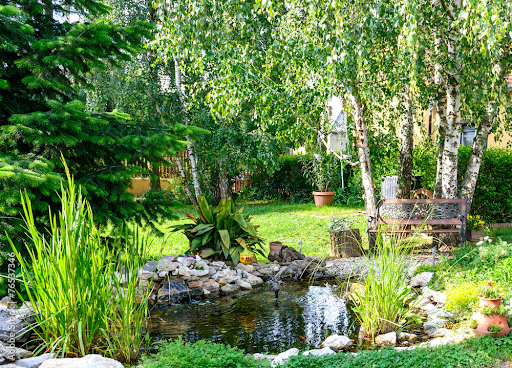
A landscape pond is a great addition to your already beautifully landscaped yard. It can not only improve your yard aesthetically but it can also increase the value of your property. A landscape pond can be tricky to install but it can be done if you have the right instructions, the right tools and the right expert advice. Here you will get the expert advice you need to get your landscape pond installed successfully and properly working. When you use this guide you won�t have to worry about your water disappearing or algae forming. These tips are fundamental to the success of your installation and to a smooth installation process as well.
1. Placement of your Landscape Pond
You want to start by reviewing your current garden and determining where the ideal location for a landscape pond is. If you have the means to, you can get a professional to draw up a design plan like the one above. This is important to do upfront as it will ensure that your pond will be in an ideal spot. This prevents the waste of time and money and increases the likelihood that your landscape pond will be installed successfully.
Choose a spot that doesn�t get too much sunlight. Too much sunlight will increase the growth of algae.
Once you decide on your spot it is time to start digging. The average depth of a small garden pond is 3 feet.
2. Choose Material for the Base of the Pond
You must choose a hard material that will prevent water from escaping from the pond area. Use this to cover the entire pond cavity. Your options are hard concrete or a rubber liner complete with small rocks, sand or both. Once you have chosen your base material you can move on to the next step prior to laying your base material.
3. Plan Pipe Placement for Filling Drainage
This step is self explanatory. You may from time to time need to add more water to your pond as well as you may need to drain it for cleaning. You can purchase a pump that can be hidden with plants or rocks so you don�t disrupt the natural look of your pond. If you need help with this aspect of installing your landscape pond you can always get expert advice from us over at Evergreen Tree Services Ltd.
4. Decorating your Pond
Big rocks are a great decorative addition to your landscape pond. If you have pieces of broken cement laying around from a previous home project those can come in handy too. Mix in a variety of other rocks to add texture and aesthetic appeal.
5. Create a Backdrop with Tall Plants
Create a backdrop using drought resistant grasses or any other tall plant that will do well in your area. You can add additional plants around the pond but use plants that decrease in height as they get closer to the water. This creates a more natural look and so your pond will look like it was placed there by nature.
You don�t just want to build a pond for resale value, you also want to enhance your backyard and create a recreational space you and your family will enjoy. All you need for a successful landscape pond to work is some planning and some elbow grease.
If you ever need some help with your landscape whether it is residential or commercial, you can give us a call. We offer a range of services for all your tree care and landscape maintenance needs. Get in touch today.
Landscape Design: Neglected Shady Site Becomes Meditation Garden

Designing a Meditation Garden in a Shady, Neglected Spot
Shaded areas are often left neglected and seen as �difficult to plant� spots. This was the case at a senior residence. Unfortunately, this neglected spot is the main view from the hallway that leads from the main lobby of the residence to the elevator and apartments on the first floor.
Many landscape maintenance companies came through and did some work but the results were less than stellar. Their choice of plants failed in the location or were just not visually striking enough.
Ultimately, it was a small group of residents that had some gardening experience that produced the design that made the spot a pleasurable and functional sight. Their design made the view from the hallway pleasant no matter the season. The best thing about their design was that it was trouble free and entirely simple. They got some decorative boulders from a local dealer and chose some plants that like shade and are undemanding.
The Site
The site would receive some amount of winter sun but almost no sun all summer long. The soil was mostly humus-filled and very good at retaining water. The space was approximately 300 square feet in size, and automatic irrigation was already in place.
Plants Used
The plants chosen for this spot were ferns and hostas as they are shade tolerant and still distinctive with dramatic foliage. They don�t require a lot of maintenance and only require ample irrigation immediately after planting especially during the hottest times of the year. Hostas require a little maintenance which entails removing their spent blossoms. This helps them to look better.
Ferns
Ostrich and Cinnamon Fern are native North American plants. These were planted along the edges of the garden and overtime turned into tall vegetative and spore-producing fronds. The latter are good for providing seasonal interest since they tolerate winter weather pretty well.
You can expect cinnamon fern fronds to grow as tall as six feet and as wide as a foot. Their vegetative fronds are large while the spore producing fronds are smaller. The spore producing fronds start out a bright green and then turn into a cinnamon color which is what gives the fern its name.
Ostrich fern fronds can get to four feet high while their spore producing fronds can grow up to two feet tall. The fern gets its name from the way the fronds grow similar to ostrich plumes.
The Japanese Painted Fern is a low growing, spreading plant. They get no higher than 2 feet high and spread around 2 feet in diameter. It is believed to have received its name because its stems are a silvery dark maroon while its veins mark grayish-green fronds.
Hostas
Hostas are available in multiple shades of green. You can find them in a variety of sizes, with white or lavender flowers that are odor free. Here are a couple varieties.
"Big Boy" is a large mounding type of Hosta that was introduced to horticulture in 1980. It has large green leaves measuring up to 144 square inches and some plants may grow more than 28 inches in height.
"Francee" is a smaller mounding type that came around 1986. Its leaves are medium sized and are dark and rough with narrow white margins. The leaves can grow to be between 80 and 150 square inches on a plant that is 20 to 30 inches tall.
"Hosta Variegata" is one of the first hostas that was known in North America. Evidence of this plant has been around since 1839. It features waxy leaves with wihte centers and green margins. Plants that are 10 to 20 inches tall will have leaves that grow between 25 and 80 square inches.
The Garden�s Finishing Touches
They finished up the garden with a Sprite statue which was reproduced to fashion one from the Midway Gardens display done by Frank Lloyd Wright. The statue was loaned by a resident. Now from the lobby to the elevator and first floor apartments you get a beautiful view of this garden instead of an unighly dark shady sopot.
An English garden bench rests against the foliage in one spot making it an attention grabbing piece in the garden. It works to connect all the design elements and brings everything together. The result is a picture perfect garden that will appeal to any passerby no matter the season. The bench offers enough seating for two residents or visitors and so now the space is functional as well as it is beautiful.
Do you have a spot in your garden that has seemed to lose all hope? Let us at Evergreen Tree Services revive the spot. We are experts in our field and have certified arborists on staff so we have the science and the technique all in one place. We will be sure to get your neglected and unsightly garden spot looking lovely in short order. Contact us today!
Get Ready To Learn About Organic Weed Prevention

There�s been a lot said about organic weed prevention benefits, but there are some of us who are still skeptic. So you want to know if organic weed prevention is any good? This is the question most often asked on this topic. The next most common question is what is considered organic weed prevention. And we will cover all that and more right here today.
Organic weed prevention can be done manually or by using products that remove or control the growth of wild plants. There are many options available for gardeners and homeowners alike.
The idea of organic weed control doesn�t go against the use of products. The idea is to remove or control wild plants in the most natural way. So you can use fertilizers and sprays, just ensure you read the labels and understand what they contain. If you take a look, you will find that organic weed killers have organic fertilizer forms as part of their ingredient list.
How Well Does Organic Weed Control Work?
Organic weed control works well to control wild plants, but there are other benefits too. When you use organic weed control, you keep your soil healthy. Soil naturally contains certain vitamins and minerals, and these contents make your soil fertile, causing your plants to grow well.
Many people use chemical fertilizers, thinking they are good for their plants and their garden on a whole. But the prolonged use of any chemical herbicide or weed killer makes your soil unhealthy overtime. Chemicals being harsh on the soil will be harsh on your plants as well. And so next spring, your lawn may not be as pretty as it was this spring.
This is not the case when you use an organic weed killer on your lawn. An organic product is made up of natural materials. Most of them are made from manure and homemade weed control products. So whatever vitamins and minerals are contained in this, will be automatically added to the soil.
Keep that in mind when creating your organic weed management plan.
Keep Your Family Safe
Another benefit of an organic weed prevention method is that it keeps you and your family safe. Chemicals used in gardening pose a threat to your family; both humans and animals alike. Residues from these chemicals can stay on your plants even after you properly wash and rinse them.
There are also some products that produce a toxic effect on our bodies, even if we don�t eat them. Just the scent of a particular chemical can make you sick and/or dizzy. It is possible that even a slight skin contact with any of these chemicals could cause a negative reaction.
Organic Weed Prevention is More Economical
We all want to find ways to save money, and that is possibly what drove you to planting a garden in the first place. You can further lower your costs while also producing healthy fruits, vegetables and produce by using organic weed prevention. Many chemical fertilizers are made by large companies with a lot of overhead. This is reflected in the price of the products.
On the other hand, the organic weed killers you will find are created with the efforts of nature enthusiasts and farmers. They don�t have a main objective of earning money. Instead, they want to save the planet. They not only promote products, but they also promote processes and provide information that can help gardeners and farmers maintain their plants while also protecting the environment. As a matter of fact, if you are already on a farm, you may have all the organic waste you need to create your own weed prevention and control product. Use dried grasses, hays and manure you already have on hand, and you don�t have to spend a dime.
These are just some ways you can benefit from organic weed prevention. For more gardening and farming tips. Check out other posts on our blog. If we haven�t written on that topic yet, you can definitely give us a call. Check out our tree care and landscape maintenance services while you are at it. We would love to be of service to you.
 |
  |
�{�T�C�g���̕��͂���юʐ^�A�摜�̖��f�]�ڂ��ւ��܂��B
Copyright 2001-2004 Hiroshi Takizawa. All Rights Reserved. |
|




 Let's enjoy this world with me!
Let's enjoy this world with me!